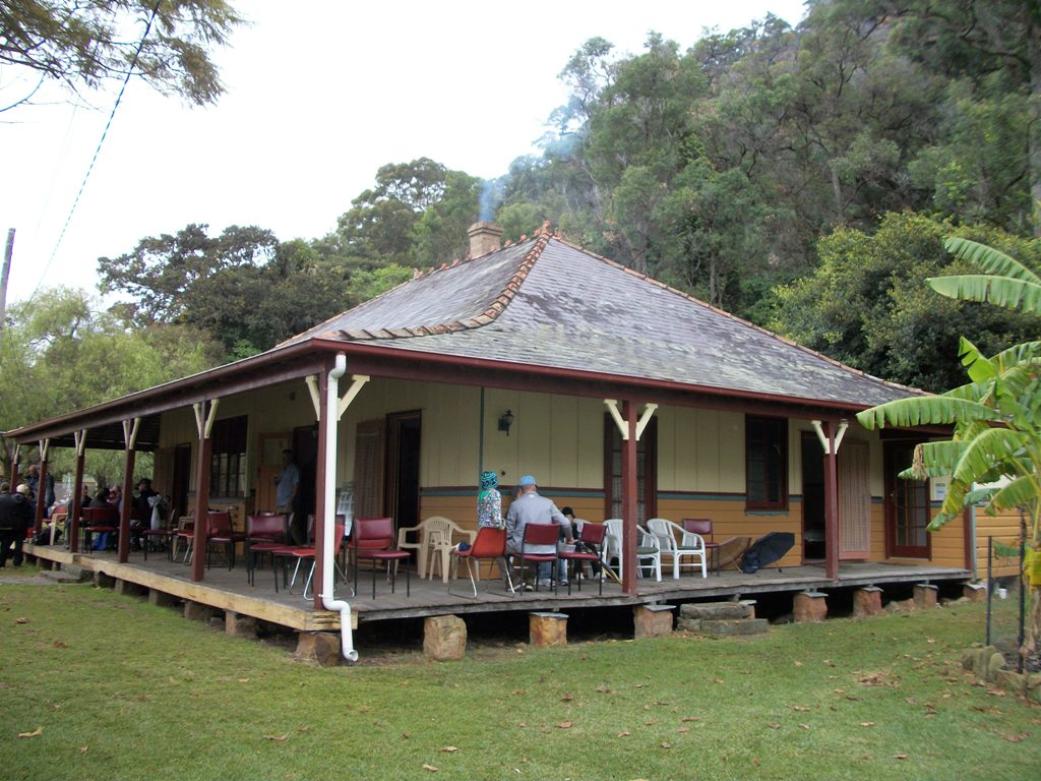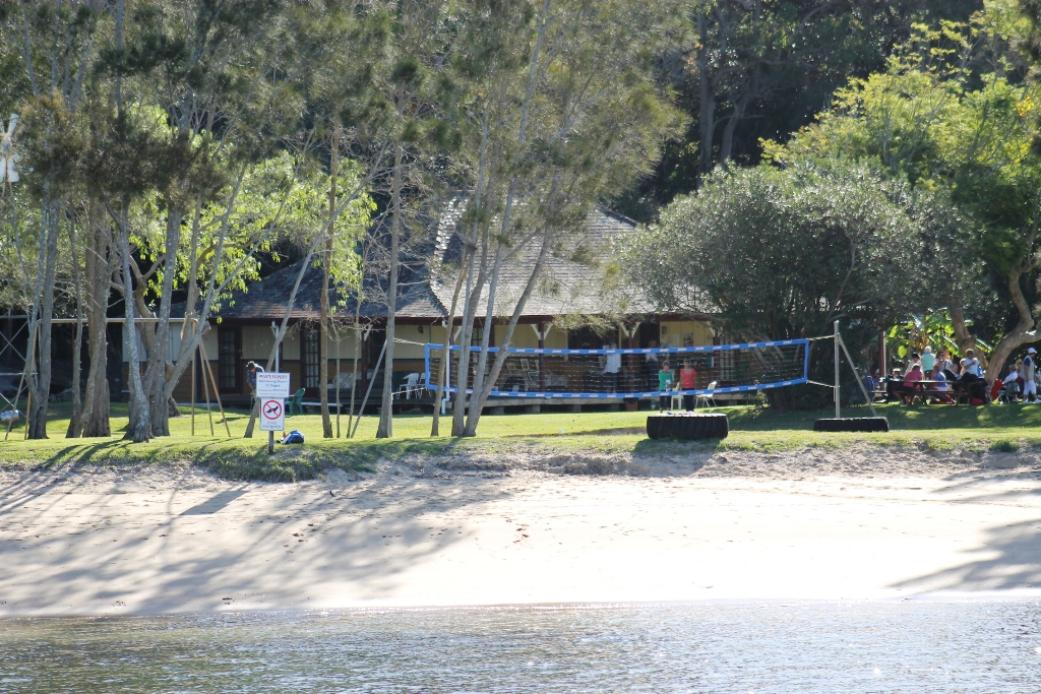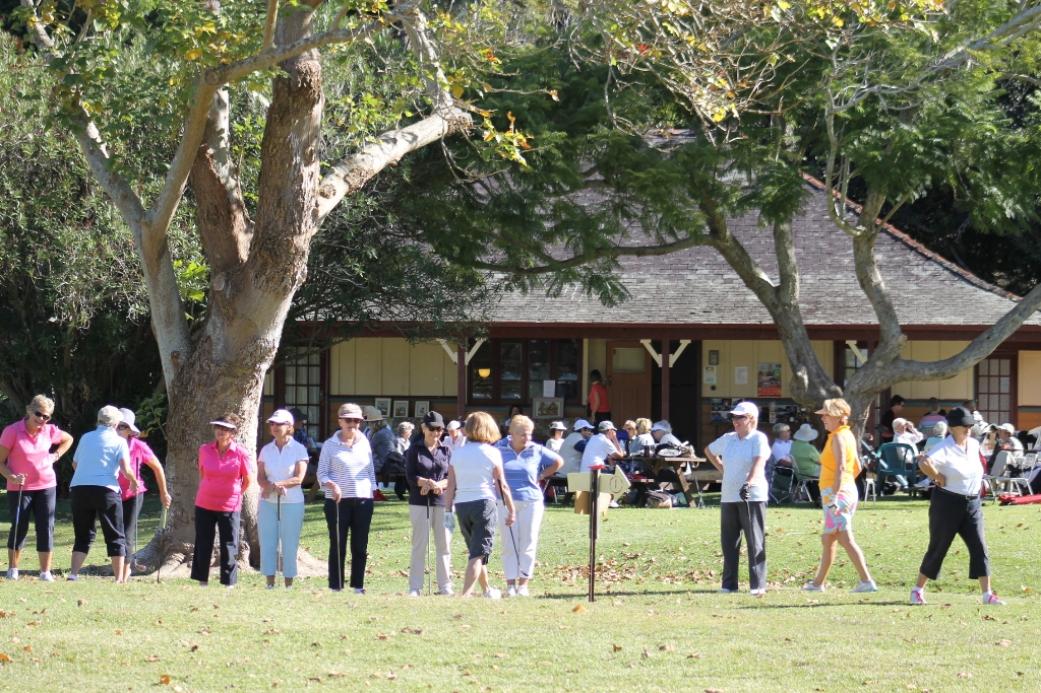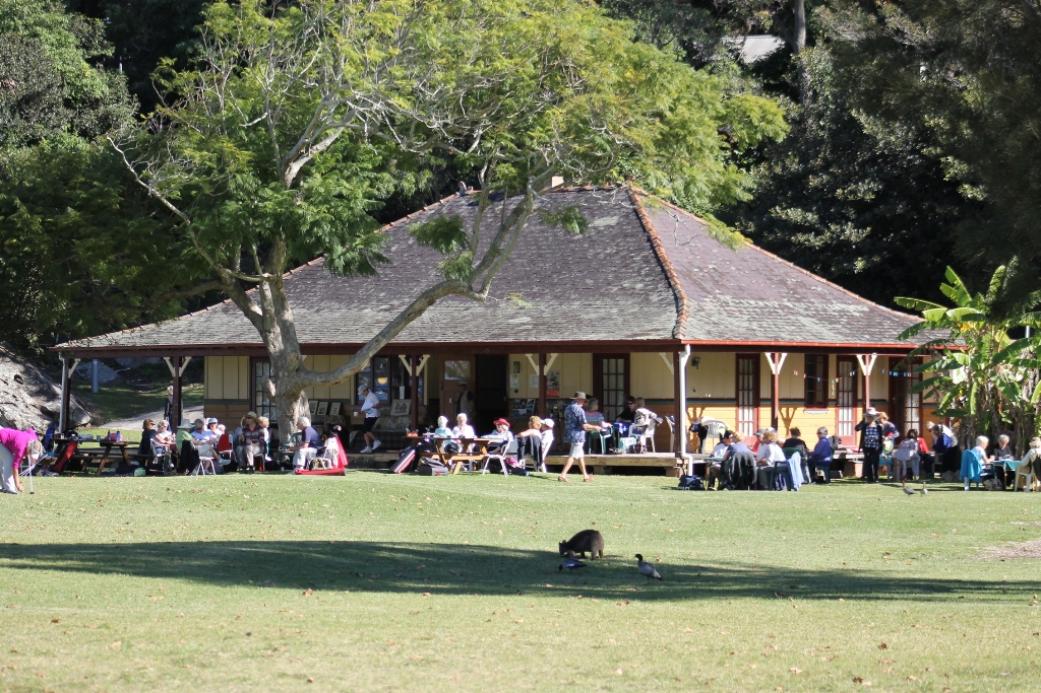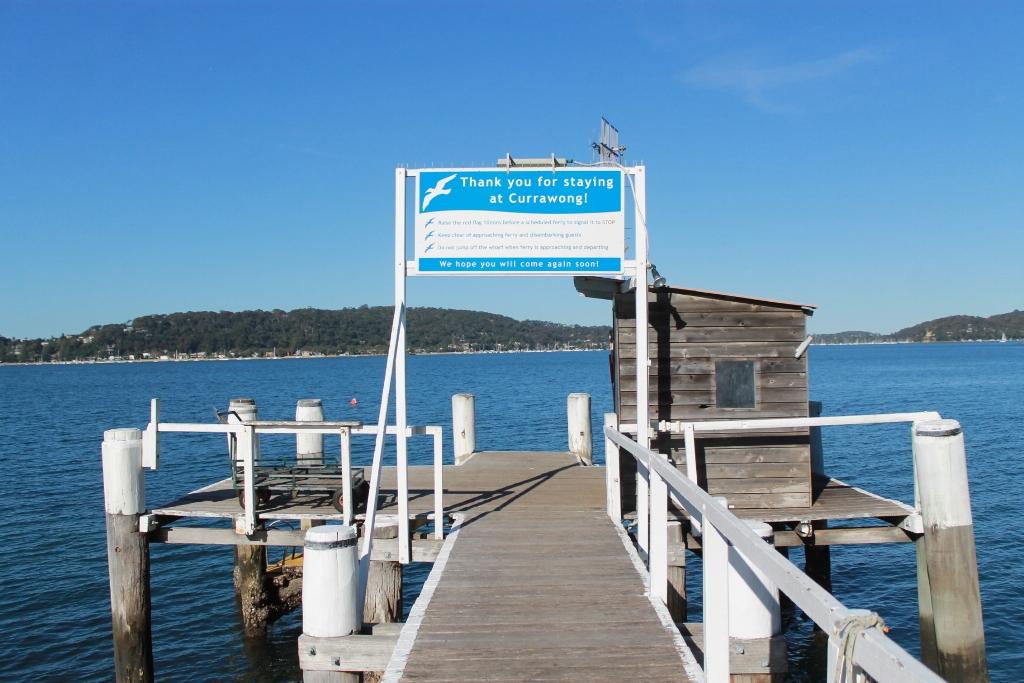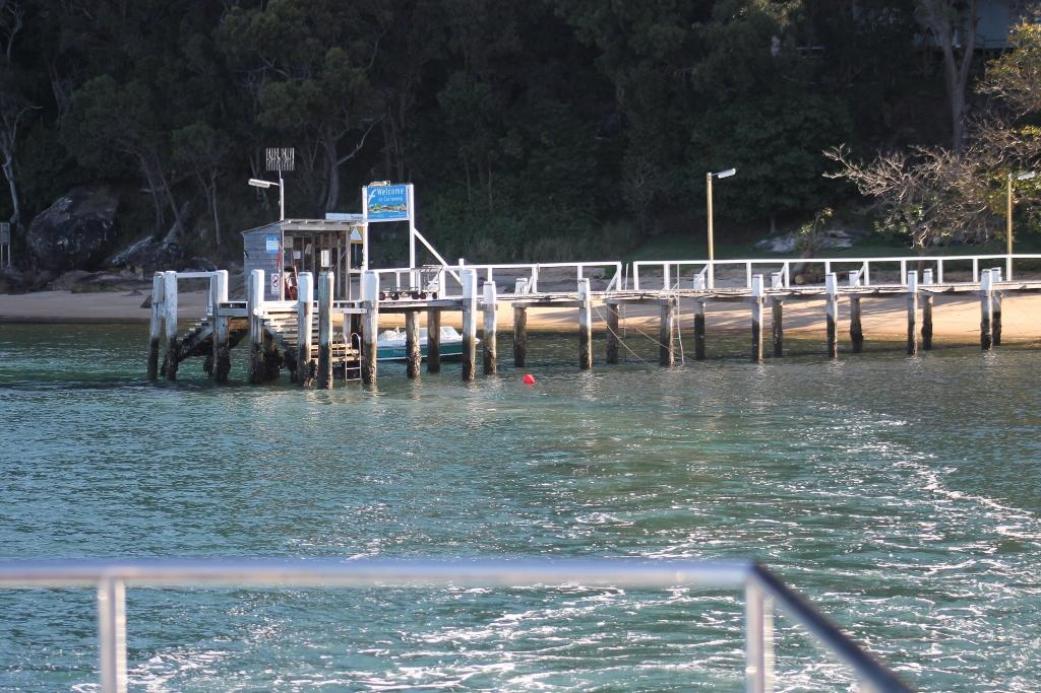LITTLE MACKEREL BEACH
AN OLD LADY'S CLAIM Won in the equity court
Mr. Justice .Street yesterday, decided the action in Equity between Sarah Priscilla Wilson, an old lady, aged 84 years, and her grandson-in-law, James Goulding and her grand-daughter, Amy L. Goulding, for on prior to set aside an alleged deed of conveyance from the plaintiff to the male defendant, find also a settlement by the male defendant, of the property known as Little Mackerel Beach, Pittwater, Manly, to his wife.Further particulars of the claim and defence have already been published. Mr. W. H. .Walker (instructed by Mr. Aynauit Burns) appeared for the plaintiff, and both defendants appeared in person. His Honor said that Mrs. Wilson and her son Edward appeared to give their evidence straightforwardly enough, and he had no reason to doubt that their story was true. Against that story the only evidence was that of the defendant Goulding, and so far as he was concerned he (his Honor) regretted to say the conclusion to which he had come was that he was a witness upon whom he could place no reliance whatever.
Goulding was in conflict not only with Mrs. Wilson and her son, but with Mrs. Sanderson, Mrs. Pointing Goulding, his step-mother, and his own witness, Mr. Barnett Smith. He found that the indenture of conveyance was obtained from the plaintiff under circumstances which rendered It quite impossible that any validity could attach to It. The conclusion his Honor had come to was that both Mr. and Mrs. Goulding were not telling the truth as to any post-nuptial agreement having been entered into for the transfer of the property. That Doing so, and there having been no post-nuptial agreement, the post-nuptial settlement was nothing ..., the female defendant was in no better position than her husband. His Honor said that on the evidence the indenture was obtained by the male defendant under circumstances of fraud and misrepresentation, which rendered it void as against him, and also against his wife. Also the settlement of 1000 was void, as against the female defendant, and he ordered both documents to be delivered up to the plaintiff. Costs would be against the male defendant. LITTLE MACKEREL BEACH (
1908, August 8).
The Australian Star (Sydney, NSW : 1887 - 1909), p. 15 (EXTRA SPECIAL). Retrieved from
http://nla.gov.au/nla.news-article229093318
Mrs. Sarah Priscilla Wilson sold the property to her son-in-law John Albert Sanderson, husband of her 8th child and the daughter named for herself, Priscilla, who then sold it to Pink Marie Stiles, the wife of Dr Bernard Stiles (Physician and Surgeon Sydney University 1906) of Newtown two years later. NSW Records show her owning the property from October 18th, 1912.
By that time the property was known as 'Currawong'.
Bernard Tarlton Stiles was the son of Rev. George Edward Carter Stiles, born at Windsor on October 23rd, 1835, a son of the Reverend Henry Tarleton Stiles.
Henry Tarlton Stiles (1808-1867), was a Church of England clergyman, was born on 24 June 1808 at Bristol, England, a son of Carter and Sophia (neeTarlton) Stiles. According to family tradition he was intended for the Indian army. His strong Evangelical upbringing led him to the Church Missionary Society's college at Islington though 'his constitution [was] not considered calculated to withstand the effects of a Tropical Climate'.
Rev. H T Stiles had scholarly interests—he hoped at one time that the Bristol Clerical Education Society might sponsor him at Oxford—and served as tutor in several important families, including that of (Sir) James Stephen of the Colonial Office. It may have been Stephen who prompted him to look to Australia, where the authorities had decided to recruit clergy and were having difficulty in securing an Englishman as master of the Female Orphan School. Stiles was appointed to this position in 1832 because of very high testimony to his peculiar fitness 'for the education and superintendance of Youth'. He was ordained deacon on 23 December 1832 and priest on 20 January 1833 by Bishop Blomfield of London.
Henry Tarlton Stiles, Image No.: a2824355h, courtesy state Library of NSW, The Mitchell Library.
On 11 February he married Jane, the eldest daughter of Charles and Grace Hole, of Kingsbridge. The couple had six sons and two daughters, all born here, the son named for Samuel Marsden passing away May 13th 1841, Annie Jane passing away November 7th, 1849, William John Francis passing away December 8th 1842 - these children were interred at St. Matthews, Windsor, the rest of their children survived their childhood:
Children
STILES ANNIE J 1846/1849 V18491846 34A HENRY T JANE
STILES CLEMENT J W 1202/1847 V18471202 32A HENRY T JANE
STILES WILLIAM J F 987/1842 V1842987 26A HENRY T JANE
STILES SAMUEL M 1098/1840 V18401098 25A HENRY T JANE
STILES CHARLES T 791/1839 V1839791 23A HENRY T JANE
STILES MARY E 793/1837 V1837793 21 HENRY T JANE
STILES GEORGE E C 919/1835 V1835919 19 HENRY T JANE
STILES HENRY B A 988/1834 V1834988 18 HENRY T JANE
Stiles sailed in the Warrior and reached Sydney in July. He had been promised the first vacant chaplaincy in addition to the Orphan School mastership; alternatively, he might receive the charge of a parish. Within a month he was sent temporarily to St Matthew's, Windsor, and the appointment was made permanent before the year ended.
As an Evangelical with missionary interests, Stiles became a close friend of Rev. Samuel Marsden, who sent him to Norfolk Island in August 1834 and December 1835 to minister to condemned felons. In November 1836 he sent evidence to the proposed committee on transportation stressing the need for drastic reform of the penal system at Norfolk Island.
These were to be Stiles's only excursions outside Windsor. He settled down to the duties of his parish, which included Richmond until 1842, Kurrajong and Clydesdale, and where the Hawkesbury River, the mountains, bad roads and the scattered population made pastoral visitation 'a work of great fatigue'. However, the parish was well-equipped with churches, schools and a rectory, and had wealthy influential parishioners.
:
HIS Excellency the Governor has been pleased to nominate the Reverend Henry Tarleton Stiles, to be Assistant Chaplain in New South Wales, until the pleasure of His Majesty shall be known; and, upon the recommendation of the Venerable the Archdeacon, to appoint him to take charge of the Towns and Districts of Windsor and Richmond.
By His Excellency's Command,
ALEXANDER M'LEAY.
Colonial Secretary's Office, Sydney, 3d Sept. 1833. Colonial Secretary's Office, Sydney, 2d Sept. 1833. TO MASONS AND OTHERS. (
1833, September 9).
The Sydney Herald (NSW : 1831 - 1842), p. 4. Retrieved from
http://nla.gov.au/nla.news-article12847669
The Reverend taught his own children and a few others in the district, among them John Tebbutt, known for his work in astronomy:
An Australian Astronomer.
John Tebbutt, of Windsor, F.R.A.S., the well-known Australian astronomer, is the grandson of a very old colonist. His grandfather, John Tebbutt, emigrated to this colony in the year 1801, bringing with him his wife, two sons (Thomas and John), and an only daughter. Soon after their arrival in the colony the family gave themselves up to farming pursuits in the Hawkesbury district, but this occupation proving rather unsuccessful they opened a general store in the town of Windsor, which rapidly became the most important in the district.
John, the younger of the two brothers, married, and the fruit of this union was the birth, in Windsor, on the 25th May, 1834, of the subject of our sketch. The business referred to was closed about the year 1842, and the father then purchased the Peninsula estate at the eastern extremity of the town, built thereon a residence, and devoted himself to agricultural pursuits. The son was educated in private schools, his first tutor being the parish clerk, Mr. Edward Quaife, and in succession the Revs. M. Adam and H. T. Stiles, M.A., under the last of whom he received a sound, classical education. The attention of the youth, who was inclined to mechanical pursuits, was first directed to astronomy about the year 1853, and his love for the science was quickened in no small degree by his frequent intercourse with his first tutor, Mr. Quaife, who had a fair knowledge of its outlines, and some of whose early contributions may be found in the New South Wales Calendar and General Post Office Directory for 1835. It was not until 1864 that Mr. Tebbutt became possessed of instrumental means adapted for fairly good work, but in the meantime he had made great advances in the higher mathematics, and was thoroughly acquainted with the theory of astronomical instruments before he came to their actual employment.
At the close of 1863 he erected a small observatory on the Peninsula estate, a property which he subsequently inherited from his father, the building being constructed of wood, and wholly the work of his own hands. In this building he installed a small trausit instrument and a 3¼ -inch refractor mounted by himself as an equatorial, His instrumental means gradually grew in importance, and for some, years past he has possessed two substantial observatories of brick, which accommodate an excellent 3-inch transit instrument by Cook and Sons, a 4½ -inch equatorial by the same makers, and lastly an 8-inch equatorial refractor by Grubb, acquired in 1886. A just idea may be found of the observatory buildings, old and new, from the views which accompany this sketch. Mr. Tebbutt was elected a member of the local Royal Society in 1862,and he is, therefore, one of the few members now living who joined it when it bore the title of the Philosophical Society of New South Wales.
As early as 1863 his abilities were so far recognised by the Rev. W. Scott, M.A., the first Government Astronomer, that he was recommended as his successor to the office. In 1869 his work was considered of such importance that his private institution was placed in the list of principal observatories in the "British Nautical Almanac," and soon afterwards it was recognised in a similar way in the national ephemerides of the United States, France, Germany, Brazil, and Mexico.
In 1867 Mr. Tebbutt was selected by the local Commissioners of the Paris Exhibition to write a paper on the "State and Progress of Astronomy in New South Wales." which was duly published in the catalogue prepared by that body and subsequently reprinted in an enlarged form in the "Industrial Progress of New South Wales, 1870." For this paper he received a commemorative silver medal. In 1873 he was elected a Fellow of the Royal Astronomical Society, but for 11 years previously his astronomical contributions were published by the society. As a proof of his industry, it may be stated that of the 36 annual volumes of the "Monthly Notices" since 1862, there is only one which does not contain work done by him. He has also been a regular contributor for the past 35 years to the "Astronomische Nachichten," which is really the international journal of the science, with the exception of some occasional Meteorological work, he has been the sole observer in connection with his observatory. In the reduction of the observations he has obtained occasional assistance from outside sources.
He has had the pleasure of seeing a large portion of his work utilised by some of the most distinguished astronomers, and the testimonials, both public and private, which he has received from them are of the most gratifying character. His astronomical work has been of a varied character, but it was mainly directed to the observation of lunar occultations of stars, phenomena of Jupiter's satellites, comets, minor planets, and double stars. He has published no fewer than 987 observations of observations, which will hereafter afford splendid material, not only for the determination of a fundamental meridian for Australia, but also for settling some delicate questions with regard to the motions of the moon. The observations in this department have been continued partly at the suggestion of Professor Newcomb, of Washington. The observed occultations from 1873 to 1876 were utilised by Professor Auwers in 1884 for the determination of a fundamental meridian for Australia, and those from 1864 to 1870 just recently by Dr. Clemens. The discussion of the series for 1884-70 forms an inaugural dissertation read before the University of Gottingen. Although the data for these two discussions were obtained with the earlier and comparatively imperfect instrumental means their extraordinary accuracy has been amply attested by the authors. Mr. Tebbutt's observations will, therefore, in the future, be regarded as a fundamental point in the Australian system of triangulation.
His comet work, too, finds a place in several well- known astronomical monographs, and in this connection it may be stated that he is the recognised discoverer of two of the grandest and most remark-able comets of the 19th century. One of them, namely that of 1861, was discovered by him six weeks before it was observed in Europe, and he was able, by the mathematical knowledge which he had at that time acquired, to compute the orbit, and predict the earth's close approach to the tail, a pre-diction which was subsequently verified. The other great comet, that of 1881, is referred to by Miss Agnes M. Clarke in her fine work on the "History of Astronomy during the 19th Century" as a very important one. Cometary photography, she says, came to its earliest fruition with it, and cometary spectroscopy made a notable advance by means of it. A just idea of Mr. Tebbutt 's connection with cometary astronomy may, perhaps, best be found by consulting a work by Dr. J. S. Gollas, edition 1894.
Concurrently with his astronomical work he has carried on meteorogical observations. His work in this department from 1863 to 1890 has been published in six parts and distributed. Six years more work remains to be published, and these will then be available data extending over 35 years for investigating the climate of Windsor. At the close of last year Mr. Tebbutt discontinued this department of his work. He proposes, however, to continue the astronomical work as his leisure and declining years will permit. It may be mentioned that when in 1895 a branch of the British Astronomical Association was formed in New South Wales, Mr. Tebbutt was unanimously chosen as its first president, and the choice was highly commended by the best popular astronomical journal in England. Mr. Tebbutt married in 1857, and had seven children.
MR. TEBBUTT'S OBSERVATORY, WINDSOR.
MR. J. TEBBUTT, F.R.A.S.
"THE ASTRONOMER OF WINDSOR."
MEMOIRS OF A SEARCH OF THE HEAVENS
"After making' considerable progress in the arts of reading, writing, and arithmetics for I find from my old school books that I was working at the rule of three, when eight years of age I was transferred in 1843 to an excellent school under the care of Rev. Matthew Adam, the minister of the local Presbyterian Church. Finally, in 1845, I was placed under the care of Rev. Henry Tarlton Stiles. M.A., of the local Church of England. Here I had excellent opportunities for improvement, inasmuch as the school was comprised of only six students, of whom four were members of the clergyman's own family. But it was due partly to his instruction in the use of the globes, and partly to his frequently coming in contact with his old tutor, Mr Quaife, who had a love for astronomy, and also a good knowledge of its outlines— that, young Tebbutt's tastes were directed to the study of the science.' The bent of his mind was always towards mechanics, and the leisure hours of his boyhood were chiefly spent in the construction of farming implements and of models of various kinds of machines. It was, however, at a little later period in his life that he became fired with an ambition to do real work-in astronomy. My earliest efforts were, he says, hampered for the want of instruments. ...
My earliest attempt that 1 can remember in the way of celestial observation was in May, 1853, when a comet rather conspicuous to the naked eye, was visible near the foot of the constellation Orion.' The only means in my possession at this time were an ordinary marine- telescope, and a celestial atlas. By these-means I fixed the apparent positions of the- comet by alignment with the stars in its immediate neighborhood.; During the first week of May the comet's path, lay between the foot of the constellation already named and the bright -star Sirius. Those observations with the accompanying sketches, form the first ' entries in a journal which I then commenced in connection with astronomical work. Gradually Mr. Tebbutt increased his apparatus and widened his sphere of knowledge by reading.
Describing his discovery of the '61 comet, Mr. Tebbutt says; — . On the evening of May 13, 1801, while searching the western sky for comets, I detected a faint nebulous object near the star Lacallie...
MR. JOHN TEBBUTT.
NEW OBSERVATORY AND EQUATORIAL CHAMBER IN 1906, FROM THE NORTH-EAST.
DEATH OF MR. JOHN TEBBUTT.
A NOTED ASTRONOMER.
Sydney, Wednesday.
Mr. John Tebbutt FRAS, the well-known astronomer, died last night, at Windsor, in his 83rd year.
[Mr. Tebbutt, who built his own observatory was practically self-taught. He (says the : author of "Johns"s Notable Australians") solved many important problems in astronomy and discovered a new comet 50 years ago. He might have been Government Astronomer had he felt so disposed. DEATH OF MR. JOHN TEBBUTT. (1916, November 30). Barrier Miner (Broken Hill, NSW : 1888 - 1954), p. 2. Retrieved from http://nla.gov.au/nla.news-article45429433Mr. Tebbutt was also a successful farmer.]
Rev H T Stiles's sermon after the passing of the Rev. Samuel Marsden remains on the record:
SAMUEL MARSDEN.
By VEN. ARCHDEACON GUNTHER.
"I have just had the opportunity, through the kindness of an old friend and school fellow, Rev. G. E. C. Stiles, of reading the sermon preached by his father at St. John's, Parramatta, on May 20th, 1838— the Sunday after the funeral of Mr. Marsden. Though I have endeavored for many years to obtain all the facts avail-able, I have not seen this discourse hither-to. If there is not much that has not al-ready been published, some important facts are emphasised and confirmed, and the testimony of the late Mr. Stiles is valuable, coming as it does from one who was not wont to use extravagant language and give play to his imaginative powers, but who had a well-balanced mind and singularly good judgment. Mr. Stiles dwells upon the character, labors, and the passing of his friend. His character is regarded as that of one possessing great energy and firmness of purpose, of a truly catholic spirit, and twice he refers to the sainted Marsden.
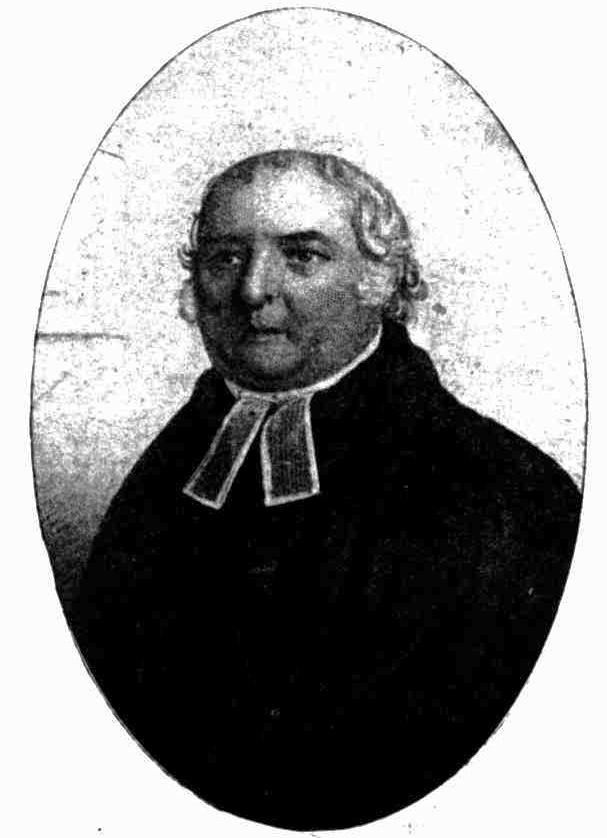
"As a parish priest, his labors were worthy of the best days of the English Church. His habit when returning home from his work was to retire to his private room for prayer. His deep humility, simplicity and godly sincerity were conspicuous, and his faith was the secret of his missionary zeal. Speaking to a friend just before the end came of his hope, he declared that 'hope is indeed precious to me now.' His last words were 'precious, precious,' not 'New Zealand, New Zealand,' as some assert. I think that all truth-seekers and lovers of truth will be glad to have the testimony of Mr. Stiles, especial-ly as such very strange reports have been circulated at times, and not so long since I had to correct statements of a well-known English writer. "In estimating Mr. Marsden's work it is well always to remember the great difficulties he had to contend with and the constitution of society in the early days of the colony. What I have heard from those who knew him well and were associated with him in his work, what I have read of the opinions formed of him by friends in England and Australia, and what Bishop Broughton said of him, namely, 'if there ever was a truly honest man, Mr. Marsden is one . . . His genuine piety and natural force of understanding I held in the highest esteem while he lived, and still retain that in sincerely affectionate remembrance,' have led me to believe that Mr. Marsden was no ordinary character, but was raised up in the Providence of God to attempt and accomplish a great work. The memories of his life and work should never be forgotten, and will be, I believe, an inspiration, especially in our southern lands, through the ages."
After 1860 Stiles was in poor health and in June 1866 his regular ministry ceased. On 21 June 1867 a great Hawkesbury flood occurred while Stiles lay dying. He directed that the church be opened to the homeless;
From EARLY DAYS OF WINDSOR N. S. WALES With Nineteen Illustrations,
BY JA[ME]S. STEELE, MEMBER AUSTRALIAN HISTORICAL SOCIETY Published by SYDNEY TYRRELL'S LIMITED, 99 CASTLEREAGH STREET 1916
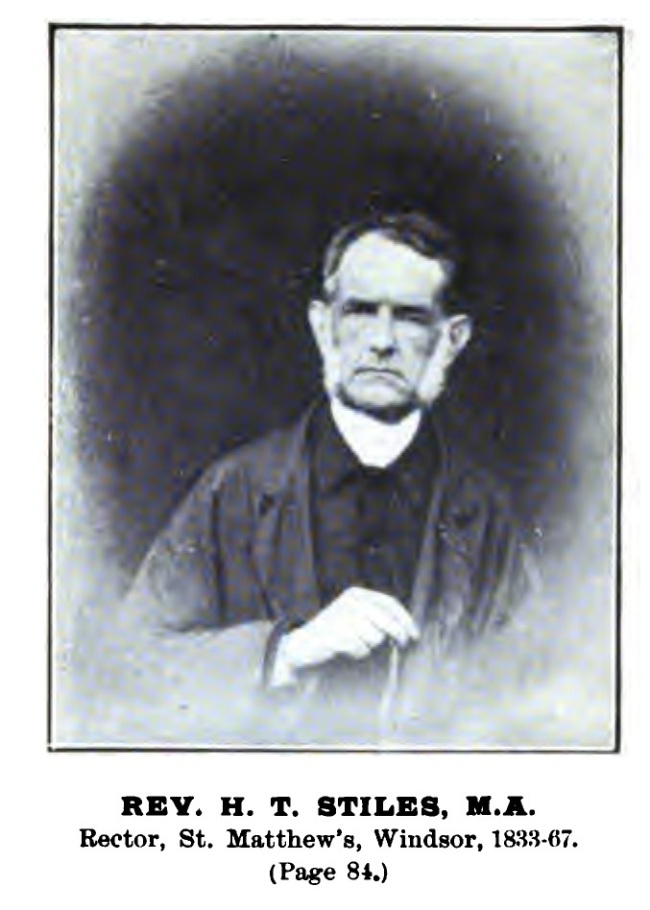
The Rev. H.T. Stiles died on the 22nd June, 1867, within two days of his sixtieth birthday. His death occurred while the big flood was at about its greatest height, the water having entered the Presbyterian Church in George Street, where large numbers of refugees had slept the previous night. The last duty performed by the dying minister was to order that the church doors of St. Matthew's be opened in order to let the homeless people find a shelter from the rising flood.
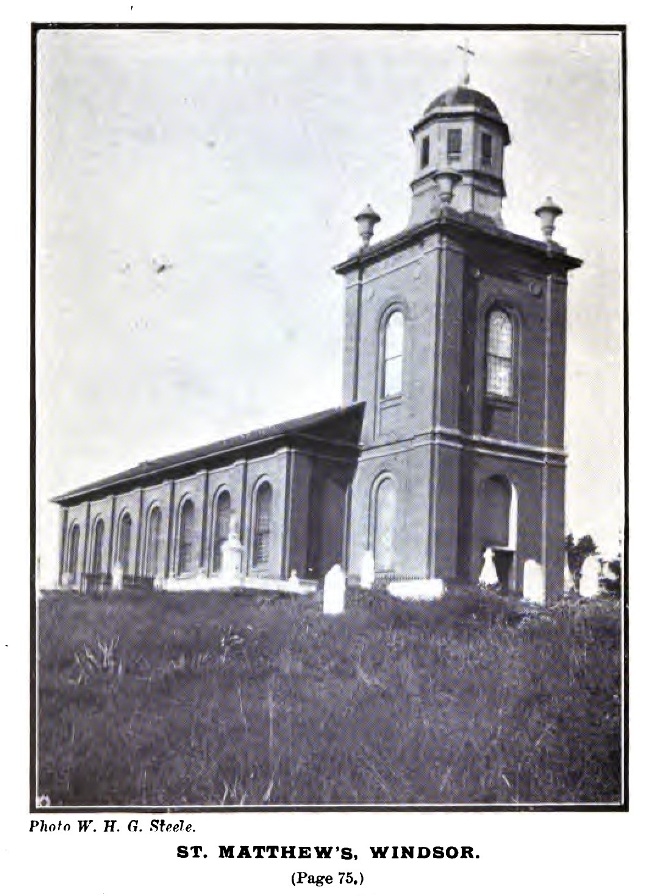
The Rev. H.T. Stiles left a legacy of two hundred pounds to the church, which forms part of the present endowment. His family consisted of four sons—Henry, George, Charles, and Clement—and one daughter, Mary, who married the Rev. C.F. Garnsey in 1860. The second hob, the Rev. George Edward Carter Stiles, B.A., was born in St. Matthew's rectory in 1835, and is at present living in retirement at Lindfield, Sydney. Mrs. Stiles died at her son's rectory in Sofala about eight months after her husband's death, and is buried with him in St. Matthew's cemetery. The grave will be seen close to the chancel at the east end. Mrs. Stiles was closely related to the Hole family, well known in connection with the scholastic and banking affairs of the town.
The following is the inscription on the tombstone:—
The Rev. HENRY TARLTON STILES, M.A.,
Born June 24th, 1808, Died June 22nd, 1867.
Him that overcometh will I make a pillar in the temple of my God, and
he shall go no more out.—Rev. iii., ver. 12.
Lovely and pleasant in their lives. In their deaths they are not divided.
JANE STILES,
Wife of the Rev. Henry Tarlton Stiles, M.A.,
Born April 10th, 1803. Died March 24th, 1868.
For If we believe that Jesus died and rose again even so them also which
sleep in Jesus will God bring with him.
Their children arise up and call them blessed.
The Rev. H.T. Stiles, M.A., was succeeded by the Rev. Charles F. Garnsey in 1867. He had been teaching a private school in Windsor for some years, and was a son-in-law of the former incumbent, being married on the 27th December, 1860, at St. Matthew's, to Mary Emma, the only daughter of the Rev. H.T. Stiles. The Rev. C.F. Garnsey assisted in the rescue work during the big flood of 1867, and also the great fire of 1874. During his pastorate improvements were made to the organ. He also arranged a big evangelistic mission, conducted by the Rev. H.A. Langley, the church being crowded nightly, and additional seats were brought over from the public school. Mr. Garnsey left in December, 1876, for St. James's Church, Sydney, as assistant. In April, 1878, he was appointed incumbent of the important parish of Christ Church, Sydney. On leaving Windsor he was presented with a valuable gold watch by the parishioners, who also presented him with a silver salver on 20th May, 1873. He died on 3rd December, 1894, aged sixty-seven years.
THE CUPITT BROTHERS
WELL-KNOWN Windsor identities, the six Cupitt brothers, whose ages total 415 years, form an interesting link with the historic past. Sons of the late Thomas and Elizabeth Cupitt, of Cornwallis, five of them were rescued with their parents from the top of their homestead during the 1867 flood. They were among the homeless people who sought , shelter in St. Matthew's Church of England, the doors of which sacred edifice were ordered to be thrown open by the Rev H. T.Stiles to the refugees during that awful deluge. Reading from left to right the brothers are: Herbert U, Frederick A., Sidney T., Henry R., Albert J, and Edward J.
STILES—June 22nd, at the parsonage, Windsor, the Rev. Henry Tarlton Stiles, M.A., aged 69 years. Family Notices (
1867, June 29).
Sydney Mail(NSW : 1860 - 1871), p. 4. Retrieved from
http://nla.gov.au/nla.news-article166799309
STILES—March 24th, at the Parsonage, Sofala, Jane, widow of the late Rev. Henry Tarlton Stiles, M.A., incumbent of St. Matthew's. Windsor, aged 64. Family Notices (
1868, April 22).
The Sydney Morning Herald (NSW : 1842 - 1954), p. 11. Retrieved from
http://nla.gov.au/nla.news-article13165054
A little about Dr. Stiles' father:
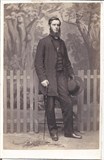 DEATH OF REV. G. E. C. STILES.
DEATH OF REV. G. E. C. STILES.The Rev. George Edward Carter Stiles, of Lindfield, who for 58 years had been a priest of the Church of England, died at Yarrangi, Newtown, yesterday, at the age of 83 years. He had officiated at Lindfield since 1907. Educated at Oxford, he became incumbent of Christ Church, Sofala, with Tambaroora, in 1863, and subsequently he officiated at Cassilis and Merriwa, Berg Apton, All Saints, Parramatta, Canterbury with Belmore, and Belmore with Moorefield’s.
From 1889 to 1902 he was curate of Woollahra and Watson's Bay, and from 1902 to 1906 he was curate in charge of the conventional district of Watson's Bay and Vaucluse. DEATH OF REV. G. E. C. STILES. (
1919, February 26).
The Sydney Morning Herald (NSW : 1842 - 1954), p. 12. Retrieved from
http://nla.gov.au/nla.news-article15826960
STILES -February 25 at Yarrangi Newtown, George Edward Carter Stiles, aged 83 years for 58 years a priest of the Church of England. By request, no flowers. Family Notices (
1919, February 26).
The Sydney Morning Herald (NSW : 1842 - 1954), p. 10. Retrieved from
http://nla.gov.au/nla.news-article15826963
Rev. G E C Stiles brought his family, including Bernard, then 4 years of age, home to Sydney per the Cuzco in November 1883:
ARRIVAL OF THE R.M.S. CUZCO.
.[BY CABLE.]
(REUTER'S TELEGRAMS.)
ADELAIDE, FRIDAY.
The Orient Steam Navigation Company's H M S Cuzco arrived at the Semaphore this morning, with the outward mails and passengers
The following is the passenger list -
Ships Lists - per Victoria State Records:
AGE
48 425 NOV - 11 B CUZCO 1883 STILES, ---- MRS
4 425 NOV - 11 B CUZCO 1883 STILES, BERNARD T MASTER
6 425 NOV - 11 B CUZCO 1883 STILES, DOROTHY M MISS
50 425 NOV - 11 B CUZCO 1883 STILES, G E C REV
2 425 NOV - 11 B CUZCO 1883 STILES, GEO MASTER
SILVER WEDDING.
"The friends and parishioners of the Rev. G. E. C. Stiles met at the . parsonage, Watson's Bay, on Saturday afternoon, on the occasion of the silver wedding of himself and Mrs. Stiles. Amongst the numerous suitable presents was one from the residents of Rose Bay, accompanied by a handsome cheque, and another from the residents of Watson's Bay, and an illuminated address from the girls of Shaftesbury Reformatory.
George Edward Carter Stiles married Mary Elizabeth Maude Isaacson in April to June 1876, the marriage was registered at Tadcaster, in the county of West Riding of Yorkshire. This lady passed away at Manly in 1939, when the Dr. B Stiles had moved to and lived there. In her the family emphasis on education was continued:
STILES. - September 8, 1939, at Manly, Mary Elizabeth Maud Stiles, widow of the late Rev. George Edward Carter Stiles, aged 87 yearsFamily Notices (
1939, September 9).
The Sydney Morning Herald (NSW : 1842 - 1954), p. 14. Retrieved from
http://nla.gov.au/nla.news-article17643323
MRS. M. STILES.
M.H. and I.M.K. write:—
"With the passing of Mrs Maud Stiles, the Old Girls' Union of Normanhurst School, Ashfield, suffered a severe loss. After having been chief assistant mistress for some years Mrs Stiles became principal of Normanhurst in 1892, and retired in 1914 after 27 years of strenuous service but she continued to keep in touch with the school and with the O.G.U.
"She was a cultured Englishwoman and a keen educationist, and, under her administration, the school became one of the chief secondary schools of New South Wales. Her strong personality inspired all who were fortunate enough to come under her influence, and her sense of honour, her justice, her emphasis upon the idea of loyalty in its widest sense, and her own intellectual honesty, set us a very high standard.
"Her personal example, before and after her retirement, as well as her teaching that service to others was a fundamental duty has had a widespread effect, through very many of her old girls, upon the life of the community, so that we feel the world has been the richer for her having lived. "
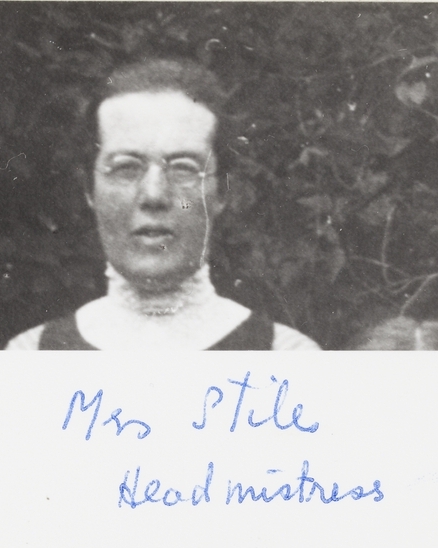
Album; Normanhurst School, pictorial collection, ca. 1890-1920; FILE TITLE: 2. Miss Evans, later Mrs. Kirwan King. Mrs Stile, Headmistress. Miss Jennings, Assistant Headmistress (Section cropped from). Image no.; c02722003h, courtesy Mitchell Library, State Library of New South Wales
A quiet wedding was celebrated at the King's School Chapel, Parramatta, June 17, when Mr. Sydney Stiles, of All Saints' College, Bathurst, younger son of Rev. G. Stiles and Mrs. Stiles, Normanhurst, Ashfield, was married to Miss Marjorie M'Culloch, second daughter of the late Mr. H. M'Culloch and of Mrs. M'Culloch, Firholme, Parramatta.
The bride wore a white crepe de chine trimmed with satin, fringe, and point lace, and an Ivory satin hat, with velvet roses.
The ceremony was performed by Rev G. Stiles, and the bride was given away by her uncle, Judge Backhouse. The King's School Chapel was prettily decorated by some of the girl friends of the bride, and Miss Amy Spier presided on the organ. After the ceremony
a reception was held at Firholme. Later Mr. and Mrs. Sydney Stiles left for the Mountains, where the honeymoon was spent.
Amongst the guests were:-Judge and Mrs. Alfred Backhouse, Rev. G. and Mrs. Stiles, Miss Dorothy Stiles, Mrs Walter Backhouse, Miss Hills, Miss Jennings, Dr. and Mrs. Bernard Stiles, Mrs. Waugh, sen., and Miss Isabel Waugh. SOCIAL. (1911, July 1). The Sydney Morning Herald (NSW : 1842 - 1954), p. 12. Retrieved from http://nla.gov.au/nla.news-article15257597
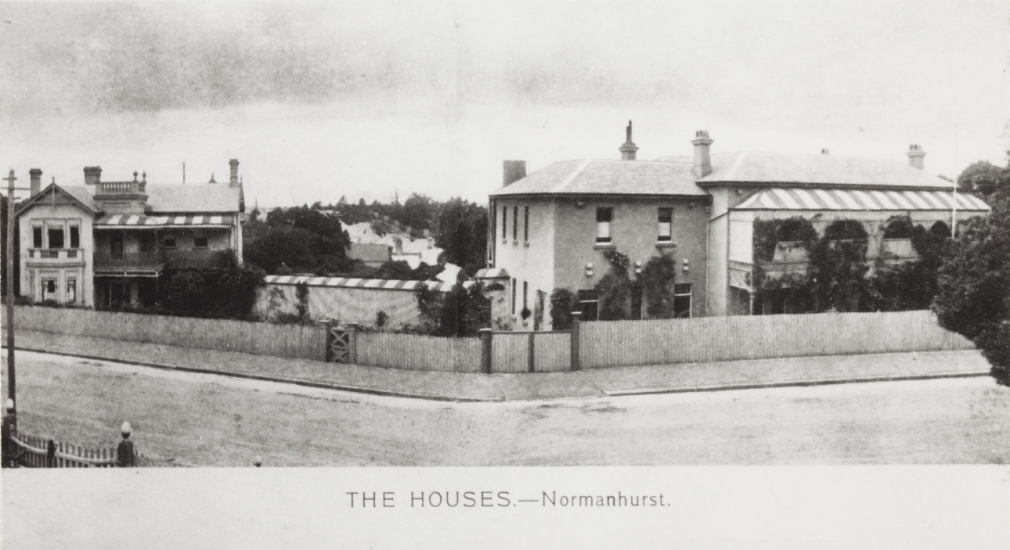
Album; Normanhurst School, pictorial collection, ca. 1890-1920; FILE TITLE: 3. The Houses, Normanhust School, Ashfield. Jennings House is on the left, and Stiles House, on the right. The buildings were on the corner of Chandos and Orpington Street, Ashfield. (Sydney Mail, 13/7/32, p. 24). Image No.: c02722002h, courtesy Mitchell Library, State Library of New South Wales
Bernard Tarlton Stiles was born in 1879, his birth registered at Loddon (April to June records), in the county of Norfolk. After returning to Sydney aged 4,Bernard attended Kings school, as had his father, and then Sydney University:
University Senior Examinations
At the recent Senior Public University Examination five students, two boys and three girls, presented themselves from this district, and sat in St. Andrew's Schoolroom, which was placed at the disposal of the local committee by the Rev. J. Paterson. The examinations were capably conducted by the members of this committee, with its hard-working secretary, Mr. F. Ernest Stowe. The King's School sent up two candidates for the Senior, both of whom passed... Bernard Tarlton Stiles passed second class in French, and third class in Ancient History, English, Latin, Arithmetic and Algebra. Current News. (
1896, December 19).
The Cumberland Argus and Fruitgrowers Advocate (Parramatta, NSW : 1888 - 1950), p. 4. Retrieved from
http://nla.gov.au/nla.news-article85764607
Degrees -
MB – Bachelor of Medicine 1906 Bernard Tarlton Stiles
CH.M – Master of SURGERY Bernard Tarlton Stiles
FRATERNAL FESTIVITIES
ANCIENT ORDER OF FORESTERS.
Court Newtown Unity, No. 7614, held in quarterly financial meeting the other evening. in the Newtown U.F.S. Dispensary Hall. Belmore-road. Bro. F. W. Weaver. C.R.. presided, and here was a large. attendance of members. .General regret was expressed as the resignation of Dr, F. P. Sandes, who is a medical officer of the Court during the past six years, had gained the esteem of every member. Dr. Bernard Stiles. M.B., Ch.M.. Church-street, Newtown, was unanimously elected to succeed Dr. Sandes. … FRATERNAL FESTIVITIES (
1907, April 12).
The Australian Star (Sydney, NSW : 1887 - 1909), p. 6. Retrieved from
http://nla.gov.au/nla.news-article229531112
From these connections to the Hawkesbury River it may be deduced that the Stiles family were aware of the existence of Pittwater long before acquiring property there. Stiles family members appear among early Pittwater Regatta results. A few social items of the Dr. Bernard Stiles show they had contact with people who were early land acquirers at Palm Beach:
CRAIG: — MAIDEN. — At St. Andrew's Cathedral, Sydney, on February 22, Mary, second daughter of Mr. J. H. Maiden, Director of the Botanic Gardens, was married to Dr. F. Brown Craig, youngest son of Captain R. Craig, of "Ailsa," Neutral Bay. Rev. Dr. Radford, principal of St. Paul's College, assisted by Rev. E. N. Wilton, B.A., precentor, performed the ceremony, the service being choral. The Cathedral was beautifully decorated with palms and flowers. The bride wore a charming gown of soft Ivory white satin, the bodice draped with Bruges lace, and carried a bouquet of white roses and lilies of the valley. Her veil, which was of old Limerick lace, was lent by Miss Hall (Hobart). She also wore a pendant of blue enamel and pearls, the gift of the bridegroom.
Among those present were; — Mr. and Mrs. J. H. Maiden and the Misses Maiden, Captain and Mrs. R. Craig, Captain and Mrs. Hugh Craig, Dr. and Mrs. Gordon Craig and the Misses Craig,
Mr. and Mrs. J. B. Craig, Mr. and Mrs. and Miss Davidson, Mr. and Mrs. Hamand, Mr. and Mrs. J. B. Wright,
AT THE UNIVERSITY.
Nearly 1200 guests attended the reception held at the University on Saturday afternoon in-honor of the members of the Medical Congress.
… Mrs. Scot Skirving, black and white silk, and a black bat with crome lace;
… Sir Normand MacLaughlin (Chancellor of the University), Professor and Mrs. Anderson Stuart,
Pink Marie Stiles (nee Field) was the daughter of an African settler. Her marriage to Bernard Tarlton Stiles took place in 1908:
STILES - FIELD.- February 16, 1908, at St Paul's Church, Canterbury. N.S.W., by the father of the bridegroom, Bernard Tarlton, eldest son of Rev. G. E. C. Stiles, to P. Marie, youngest daughter of William Ralph Field, of Molteno, Cape Colony. Family Notices (
1908, March 4).
The Sydney Morning Herald (NSW : 1842 - 1954), p. 8. Retrieved from
http://nla.gov.au/nla.news-article14913756
STILES— FIELD.— February 15, at St. Paul's, Canterbury, by the father of the bridegroom, Bernard T. C. Stiles to P. Marie Field. Family Notices (1908, March 11). The Sydney Mail and New South Wales Advertiser (NSW : 1871 - 1912), p. 701. Retrieved fromhttp://nla.gov.au/nla.news-article164345902
Molteno is a town in the Eastern Cape province of South Africa. High in the Stormberg Mountains, Molteno is South Africa's second coldest town and it is close to the country's only ski resort. P . M. Field was the daughter of William Ralph Field and Frances Farrell, who married in South Africa on November 23rd, 1865.
Soon after the nuptials the first of four children arrived;
STILES.—September 10, at 6 Erskineville-road, Newtown, to Dr. and Mrs. Bernard Stiles, a daughter. Family Notices (
1908, October 1).
The Sydney Morning Herald (NSW : 1842 - 1954), p. 6. Retrieved from
http://nla.gov.au/nla.news-article14999548
STILES.— December 16, at Yarrandi, Newtown, to Dr. and Mrs. Bernard Stiles — a son. Family Notices (
1909, December 22).
The Sydney Mail and New South Wales Advertiser (NSW : 1871 - 1912), p. 59. Retrieved from
http://nla.gov.au/nla.news-article165736547
STILES.-January 28, at Yarrandi, Church-street, Newtown, to Dr. and Mrs. Bernard Stiles-a daughter. Family Notices (
1914, January 31). The Sydney Morning Herald (NSW : 1842 - 1954), p. 20. Retrieved from
http://nla.gov.au/nla.news-article15476219
STILES.-March 18, at Yarrandi, Church-street, Newtown, to Dr. and Mrs. Bernard Stiles-a daughter. Family Notices (
1915, March 20).
The Sydney Morning Herald (NSW : 1842 - 1954), p. 16. Retrieved from
http://nla.gov.au/nla.news-article15577468
Yarrandi, in old records, had an address of 2 Church street, Newtown. The couples' three daughters and son were frequent visitors to Little Mackeral.
Children
STILES DOROTHY J 38481/1908 BERNARD T FINK M NEWTOWN
STILES REGINALD BERNARD 6716/1910 BERHARD T PINK M NEWTOWN
STILES PATRICIA F 1100/1914 BERNARD T PINK M NEWTOWN
STILES NORA F 14821/1915 BERNARD T PINK M NEWTOWN
Primary Application - Pink Marie Stiles 48 acres at Little Mackerel Beach Pittwater Shire Warringah Parish Broken Bay Volume 2442 Folio 224
Date range: 18/10/1912 to 03/01/1914 - NSW State Records
EXTRAORDINARY STORY
New Zealander Committed for Trial.
SYDNEY, June 28
Norman Edwin Keals, 27 years of age, a native of New Zealand, was before Mr. Smithers, SJM., at the Manly Police Court this morning on several charges of breaking-and entering, and stealing. Constable Jones, watch house keeper at Manly stated that on June 17 accused voluntarily made the fallowing statement and signed it:— 'In November last I was in Glenbrook looking for work. I came across a tent in an Emu Waitts camp belonging to Arthur Thompson. I went into the tent, and stole a bicycle from there, I rode the bicycle to Dawsott, and exchanged it for another which I found leaning up against a church. I afterwards saw in the papers that a … man, named Ellis was, fined £10 at the Penrith Court for stealing a bicycle from Thompson's tent. I did not know Ellis, and he had no part or share in the stealing of the bicycle. Afterwards I obtained a job on the railway; at Glenbrook till February, when I left. When... the' Salvation Army Industrial Farm at Deewhy. I entered the dining room, where I obtained some food. I afterwards stole a bicycle from there. I rode to Pittwater that evening, I entered Simpson's store at Bayview, and stole some tinned fish, biscuits, post cards, and about 2/0 in silver, also some bottles of soft drinks. These things I put in a boat there, and sailed down the bay. I got into broken water and the boat, capsized, I got ashore on to the rocks, where I spent the night. Next day I took a boat belonging to Dr. Stiles, in front of his house, which I entered, and from which I stole some food at Mackerel Beach, Broken Bay. I pulled to Careel Bay. I stole two coats, trousers, and shirts from a tent there. I went to Manly that night, and from there to Sydney, where I pawned my watch. I went to Taree and stole some clothes and money. Then I boarded a steamer at Newcastle and returned to Sydney. After working at Balmain for a while I went to Seven Hills with the intention of leasing a farm there. I failed to get a .farm, and on, my, return to Sydney I bought a revolver, with which I intended to commit suicide, I went to Manly and to the Salvation Army farm at Dee Why, where I stayed for a few days in a hayloft. From there I went to Newport, and after a few days I broke into Scott Fell's house at Mona Vale, and stayed there for a few days, and lived on food that I found in the house. I left Scott Fell's house and went to another furnished cottage owned by Edward Scott, where I broke in and remained until I was surprised by a party of week-end campers. I jumped out of a window and ran a-way, but they caught me and seat for a constable and gave me in charge. ...REMARKABLE CONFESSION. (
1912, June 28). T
he Sun (Sydney, NSW : 1910 - 1954), p. 8 (FINAL EXTRA). Retrieved from
http://nla.gov.au/nla.news-article228856742
The Stiles family kept turkeys and cows and supplied fresh milk, butter, eggs and groceries to residents of Great Mackerel Beach.
One use Pink Marie Stiles may have put the property at Little Mackerel to comes through winning prizes for exhibits at the Royal Show of April 1913, 1914 and April 1915 - and selling these in chicks and egg form. Another item, when women were having children and trying to do more as well requiring them to hire help, also shows the family spent some of each year at Newtown:
WANTED, a LAUNDRESS, two days a week; none but competent hands need apply
Mrs. BERNARD STILES,
Garrandi, Church-street, Newtown.
THE OPENING.
BY THE GOVERNOR-
GENERAL.
IMPORTANT SPEECHES.
ANOTHER RAINY DAY.
The Royal Show was officially opened' by the Governor-General, Sir Ronald Munro Ferguson, yesterday afternoon, in the presence of a large gathering His -Excellency, together with the Governor, Sir Gerald Strickland, attended the official luncheon, which did not conclude until about 3 o'clock. Up until that time rain had been falling intermittently, and it was still sprinkling when, at half-past 3, the Governor-General and Lady Helen Munro Ferguson, the Governor, the Prime Minister, and other guests, were escorted to the grand stand by the president (Sir Francis Sutor), and the council of though Royal Agricultural Society. And then it stopped raining. Even as his Excellency pronounced the Show open the battle between the sun and the rain ceased, the clouds melted away, and there was glorious sunshine for the rest of the day.
POULTRY.
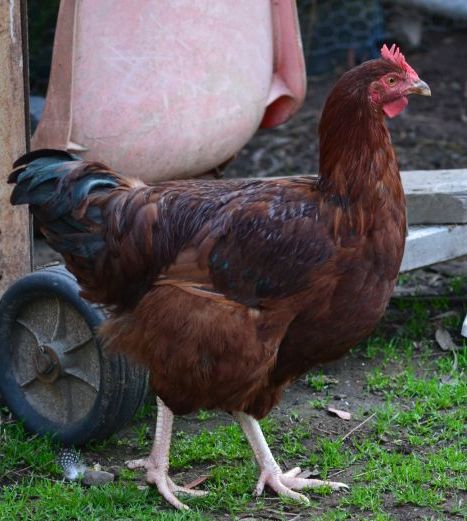 The display of poultry this year is ahead of former years in the matter of
The display of poultry this year is ahead of former years in the matter ofAwards
Sussex, red; cock; Allen and Swadling, 1 au Mrs. Bernard Stiles, 2; .Leslie V. King, 3; lt. v.h.o.; Mrs. Bernard Stiles, v.h.c.; Leslie V. King George Woodward, b.c.; Leslie V. King, c. h.e'.; Mrs. Bernard Stiles.. b.c. . Cockerel: Mrs. Bernard Stiles, 1 Pullet; Mrs. Bernard Stiles 1 and ch; Mrs; Bernard Stiles, 2; Mrs. Bernard Stiles,, h.e, POULTRY. (
1915, April 1).
The Sydney Morning Herald(NSW : 1842 - 1954), p. 8. Retrieved from
http://nla.gov.au/nla.news-article28112119
Bear in mind Mrs. B. Stiles had recently given birth while all this was going on:
POULTRY
...whilst Mrs. Bernard Stiles swept the board in the new breed of Sussex, with what the judges said was an exceedingly good team.
Despite the crisis which the poultry Industry is passing through, the annual show of the Poultry, Pigeon, and Canary Club of New South Wales, which was opened yesterday at the Municipal Poultry Markets, brought together an excellent collection totalling over 800 entries...
There was considerable rivalry for "The Dally. Telegraph" Cup for the best team (cock, hen, cockerel, and pullet) in any variety in which there were six or more exhibitors; and the final, decision, rests between Bonaventuro Poultry Farm (Barred Rocks) and Mrs. Bernard Stiles (Red Sussex), both of whom scored four firsts.
...while, the 'Australian Hen" trophy for the most successful exhibitor of Red Sussex was easily carried off by Mrs. Bernard Stiles.

Outside of the summer season, part of the place was for rent - possibly the structure that was also later destroyed and replaced with 'Southend' - see below:
PITTWATER.— To Let, Camp Cottage, private beach, boatg., fishg. ev; c.Mrs. Stiles, Church St., Nwtn. Advertising (
1916, April 29).
The Daily Telegraph (Sydney, NSW : 1883 - 1930), p. 4. Retrieved from
http://nla.gov.au/nla.news-article238787581
PITTWATER.— Furnished Cottage, opp. Palm Beach, vacant after Feb. 10th, 1918, Five rooms, verandah, private beach and wharf, 3 guineas per week. Apply Mrs. STILES. Church St. Newtown. Advertising (1917, December 1). The Daily Telegraph (Sydney, NSW : 1883 - 1930), p. 16. Retrieved from http://nla.gov.au/nla.news-article239234672
PITTWATER. opposite Palm Beach.— Furnished Bungalow, wide verandah, all conveniences, private beach and wharf. Terms, £3/3/ per week. Apply Mrs. STILES, 2 Church Street. Newtown. Tel., 1023. Advertising (1918, October 19). The Daily Telegraph (Sydney, NSW : 1883 - 1930), p. 5. Retrieved from http://nla.gov.au/nla.news-article239574492
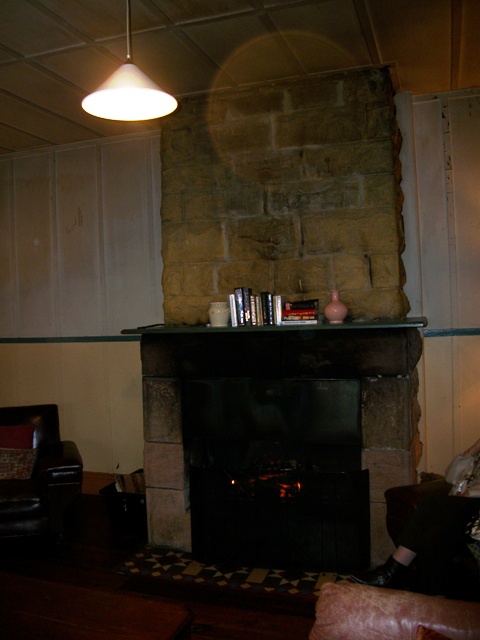
The Stiles family lived in the homestead for several years until it burnt down then built 'Africa', later renamed Midholme, a little to the northeast of the original farmhouse.
The original Wilson house, replaced with ‘Africa’, named for Pink's old home, and later renamed ‘Midholme’ is a Federation style hobby farm from weatherboards and Fibro sheeting, a product used in many holiday homes during that period.
The installation of these new structures was not without drama. Whatever had taken place behind the scenes, it gives us a closer date for the building of the new home 'Africa':
DISTRICT COURT.
(Before Judge Backhouse.)
CONTRACTOR'S CLAIM.
Alfred Wrigley Ellis, of Palm Beach, near Barrenjoey, sued Bernard Stiles, of Yarrandi, Church-street, Newtown, medical practitioner, and P. M. Stiles, his wife, for money alleged to be due under a contract. The claim, £66 10s 1d, was for time and money lost owing to the stopping by the defendants of their contract with the plaintiff for the erection of a cottage at Palm Beach. The defendants paid £18 15s into court, and denied further liability. Mr. A. R. J. Watt, instructed by Messrs. John M'Laughlin and Son, appeared for the plaintiff, and Mr. Clive Teece, instructed by Mr. J. T. Ralston, for the defendants. His Honor returned a verdict for the plaintiff for the amount paid into court. DISTRICT COURT. (
1918, March 13).
The Sydney Morning Herald (NSW : 1842 - 1954), p. 9. Retrieved from
http://nla.gov.au/nla.news-article15773331
Midholme homestead, c.1916 ‘Africa’
Midholme is a single storey, timber framed bungalow with weatherboard cladding and wide veranda to three sides. The broken back roof was of slate with terracotta ridge and hip cladding.
Internally, the house has a central common room entered from the northern front door. The kitchen is in a rear addition to the house. A bedroom is located on each corner of the house. The laundry is in the enclosed southwest corner of the veranda. The southeast corner of the veranda is also enclosed.
Believed to have been built around 1916, Midholme is a now a rare example of a farmhouse in the Pittwater region. Its wide verandas were originally semi-enclosed and the house was carefully positioned on the site to shelter from the southerly winds, the tidal beach and occasionally flooding creek. Built of timber frame with half weatherboard, half asbestos cement sheeting (fibro), it is perhaps one of the earliest uses of fibro in the district. The Pittwater area generally is renowned for its early use of the material which was to become characteristic in the region due to its use in the construction of holiday houses (Design Plus, 2003)
The 'Midholme' house stands on sandstone piers for ventilation and to avoid flooding in king tides or when the creek overflows. Originally the veranda was enclosed and these areas were traditionally used as sleeping places during days when the house was full or it was too hot to sleep indoors.
The Stiles also used this front veranda as a school area, which other children from nearby bays would attend, when they were in residence with their governess or a tutor. Bernard and Pink Stiles (better known as Peggy) and their children - Bernard Jnr, Nora, Pat and Joy spent happy years at Little Mackeral, fitting in well with the local close-knit community and participating in Pittwater Regattas.
ROWING EVENTS.
Starter, A. L. Dibb; timekeeper, E. Hires: Judge, Oscar Lind; umpires. W, J. Paddon and D. H. Wolf; handicappers, John Roche: and J. L. Wllllims.
Girls anal Boys' Singles Sculls (10 a.m.).
— Bernard Stiles, 3:sec: Joyce Stiles. 10: P. Erickson. I: Jim Loveridge. s: J. Erickson, Bert Ross. scr. PITTWATER REGATTA (1923, December 22). Evening News (Sydney, NSW : 1869 - 1931), p. 6. Retrieved from http://nla.gov.au/nla.news-article119192977
Mrs. Stiles was also a lady who had time sand energy for others and building a better community:
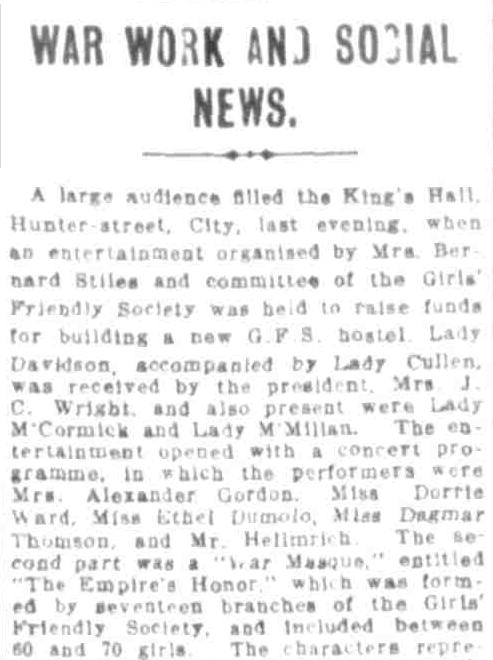
Bernard Stiles, who was raised at Currawong in the early 1910s recalled the natural beauties of the place:
'Regarding the flora and fauna I feel I should mention one bird, namely the Lyre Bird at Little Mackerel. These glorious birds were sheer delight to listen to in the morning, imitating every other bird in the bush, even the putt-putt of a motor boat or a man chopping wood was quite distinct. Koala bears and wallabies were also plentiful. Some of the wildflowers that grew on Little Mackerel and up on the Kuringai Plateau where the West Head Road now carries many sightseers are the many species of boronia, Christmas bush, flannel flowers, waratahs, Christmas bells and in one particular spot is a swampy patch that grows a very rare miniature native rose. Near this spot is the high knob where one can look west and see the Hawkesbury ridge and from the same spot look in the opposite direction and see the whole of Pittwater, Barrenjoey, Lion Island and Palm Beach, truly a unique view.' (quoted in Macken, 2003, 47-48)
During their occupation of the property the Stiles also constructed a house and garden later known as 'Wilderness' or 'Southend'. Southend was constructed prior to 1937. The building was constructed in a Federation style, however it was destroyed by fire sometime between 1946 and 1949. The site contained gardens which were reportedly quite extensive and included vegetables and fruit trees to the northwest of the house. Bernard Stiles junior recalls that this building [Southend] replaced an earlier structure which also had gardens containing jonquils and geraniums. Southend was also used as a general store by the Stiles family and for a brief period as a guest house.
Other features noted as being present or built during the time of the Stiles family include post and rail fencing, a jetty at the northern end of the beach and extending northwest following the tidal flat and south creek; tennis courts, flower gardens, a windmill, a dairy/stables and a well. The structure located just northwest of the farmhouse may have been the site of the kitchen for the homestead, later known as Canning Cottage, were the telephone was installed in the 1930s.
These enlarged sections from a Palm Beach panorama, circa 1917-1946 (1920) shows the structures at Little Mackeral and wharf at Great Mackeral and what looks like the SS Phoenix (ferry) out in the estuary:
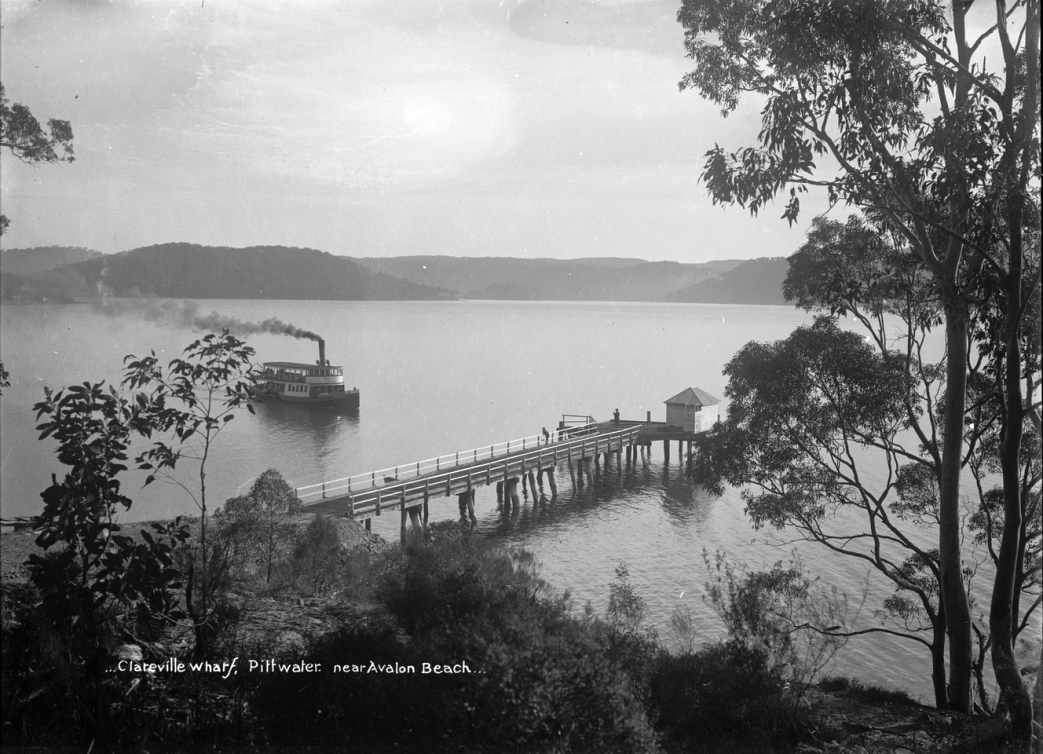
Clareville wharf Pittwater near Avalon Beach - Small steam passenger vessel coming in. Image No.: c046220013h, from Album: Avalon, Pittwater CREATOR Rex Hazlewood, 1886-1968, courtesy State Library of NSW

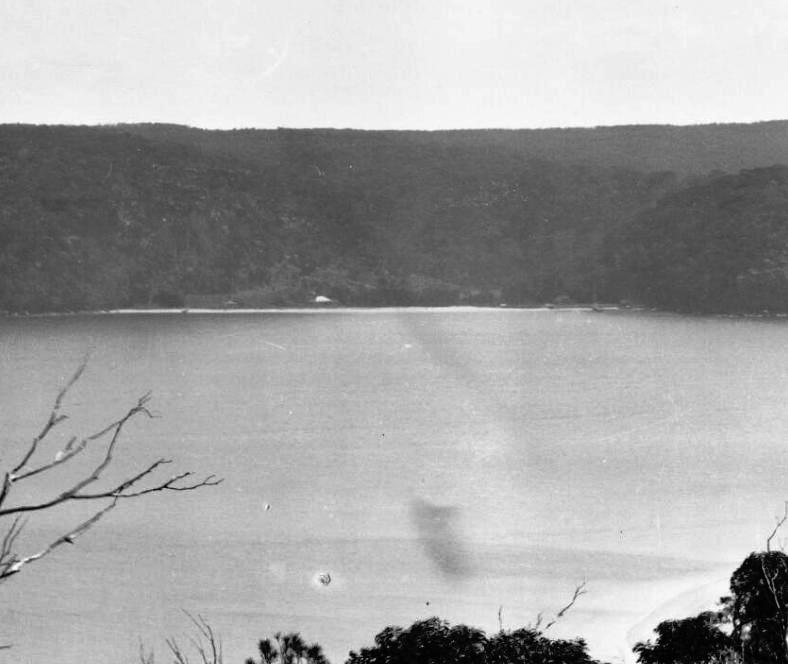
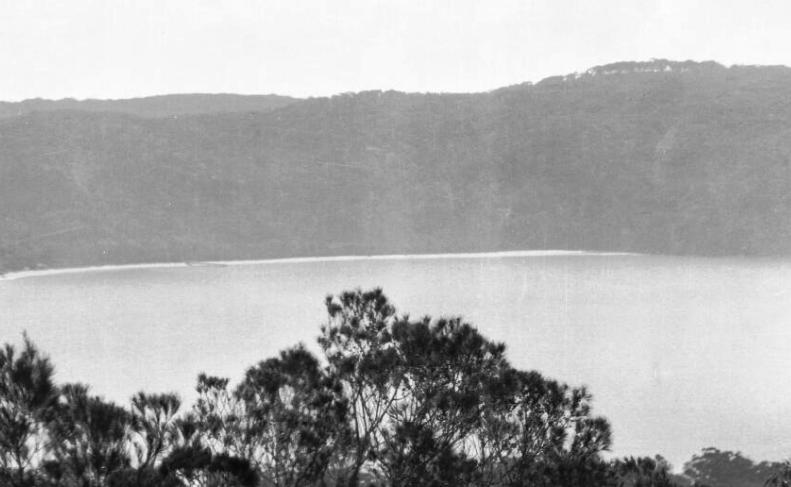
Above 1; Little Mackeral. 2. Great Mackeral.
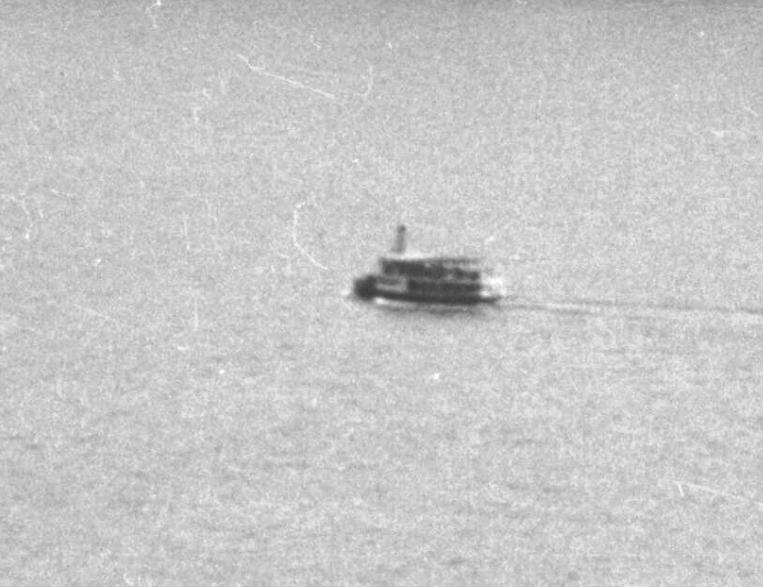
EB Studios (Sydney, N.S.W.). (circa 1917). Panorama of Palm Beach, New South Wales, 11 Retrieved from http://nla.gov.au/nla.obj-162487775 - National Library of Australia
GOVERNMENT NOTICES.
Notice under real property act.— application's having been made to bring the lands here-under described under the provisions of the Real Property Act, Certificates of Indefeasible Title will issue, unless Caveats be lodged in accordance with the Third Schedule to the mid Act, ON OR BEFORE THE 17th, DECEMBER, 1913:
No. 18,103. APPLICANT:— Pink Marie Stiles, Newtown. LAND:— County Cumberland, parish Broken Bay, Shire Warringah, 48a. 2r. 39p., at Little Mackarel Bench, Pittwater,— portion 10, parish, and part 100a. granted to Martin Bourke; adjoining properties of E. Cannell and trustee of Ku-ring-gai Chase. Advertising (
1913, November 22).
The Sun (Sydney, NSW : 1910 - 1954), p. 2 (FINAL SPORTING). Retrieved from
http://nla.gov.au/nla.news-article229353870
Mrs. Stiles subdivided Portion 10 into a further 3 allotments during the Stiles family ownership of the property. These included the sale of lot 4/DP 978424 to Isaac Barry Evans and Harriet May (32 ¾ perches) in August 1918; Lot 1/DP 166328(1 acre, 1 rod and 36 perches) to Hector Henry Forsayth, a stock and sharebroker and ex-King's School fullback, in June 1920 (although he left for Oxford University in December 1919 and was in England until 1923) and Lot 1/DP 337208 (29 ½ perches) to Sophie Rock (formerly of Balmoral Beach) in 1937-39.
AN AUSTRALIAN AT OXFORD
MR. H.-H. FORSAYTH. It was announced in' our cables a' few days ago that H. H. Forsayth, whose parents re-side at Vaucluse and who is now a student at Oxford University, had been invited by Eng-land and Scotland to play In the trial matches for the selection of the International Rugby Union football teams.
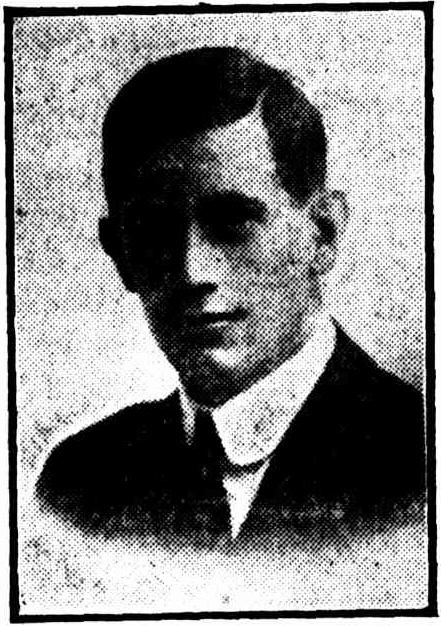
MR. H. H. FORSAYTH.
Mr. Forsayth is the son of Mr. J. M. C. Forsayth, of Vaucluse Hall, Vaucluse, a well-known South Sea Island merchant, and who has always been an enthusiast in sport. His son, who is just 21 years of age, had a distinguished career at the King's School, Parramatta, where ho won a name for his play In the full-back position. He proceeded to Oxford University at the end of last year, and in his Iast season was awarded his full blue for football. "Another Australian, and incidentally an old boy of the King's School, R. H. Benington, was awarded his blue at the same time.
Mr. Forsayth is a typical Australian of the clean athletic type. He stands nearly six feet high and now weighs slightly .over 13 stone. Private advices recently received state that young Forsayth's play is regarded as very fine by expert critics, and it is expected that he will become one of the'finest exponents of his own particular branch of the Rugby game. AN AUSTRALIAN AT OXFORD (1920, December 29). The Sydney Morning Herald (NSW : 1842 - 1954), p. 10. Retrieved from http://nla.gov.au/nla.news-article16882033
H. H. Forsayth, the old King's School boy, who played full-back for Oxford University and Scotland, tells us that the Ruby Union game has a remarkable grip in France. The players are making themselves highly proficient. YACHTING PREPARATIONS (1923, September 5). Referee (Sydney, NSW : 1886 - 1939), p. 14. Retrieved from http://nla.gov.au/nla.news-article128113110
Forsayth and his wife constructed a house known as Northend within their allotment which fronted the beach in the 1920s. They also constructed a boatshed, a flagpole and a concrete retaining wall in an effort to obstruct the tide which was undermining the foundations of Northend. The concrete wall constructed to assist the retention of the Northend house did not stop the erosion of Northend’s foundations and it was demolished in the 1970s.
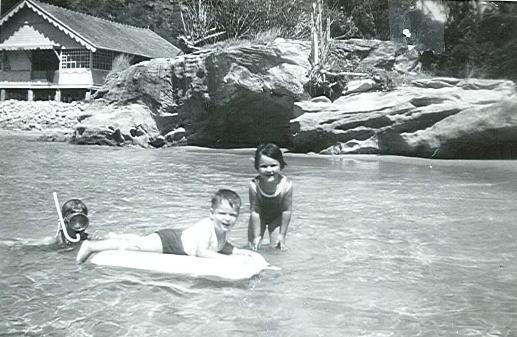
Northend (in background) 1964 - courtesy Patricia Nolan
Dr. Bernard Stiles had a brief turn in rural Wauchope:
Dr. Bernard Stiles, of Newtown, has taken over Dr. H G Bonneys practice at Wauchope, and the latter is proceeding immediately to Brisbane.PURELY PERSONAL. (1933, January 27).Macleay Argus (Kempsey, NSW : 1885 - 1907; 1909 - 1910; 1912 - 1913; 1915 - 1916; 1918 - 1954), p. 4. Retrieved from http://nla.gov.au/nla.news-article234250886
MAINLY ABOUT PEOPLE. Dr. Sandes has arrived at Wauchope to take over Dr. Stiles' practice. MAINLY ABOUT PEOPLE. (1933, November 11). The Manning River Times and Advocate for the Northern Coast Districts of New South Wales (Taree, NSW : 1898 - 1954), p. 6. Retrieved fromhttp://nla.gov.au/nla.news-article172257369
By the late 1930's the Stiles family had moved to Manly;
Death Caused By Strychnine, Says Doctor
SYDNEY.— Before she died on December 1, Mrs. Vera Doris Watt, of Kent Street, Collaroy, had told him she had taken an A.P.C. powder which tasted very bitter, Dr. Bernard Tarlton Stiles, of Manly, said in the Coroner's Court to-day at the inquest on Mrs. Watt.
Ronald Donald Pagett, of Epping, who has been charged with the mur der of Mrs. Watt, was present at the inquest. Dr. Stiles said that between 2 and 3 p.m. on December 1 he was called to Halt's pharmacy in Manly, where he saw Mrs Watt, who was unable to walk. She told him she had taken an A.P.C. powder which had tasted very bitter. She said she had taken ill on a bus travelling; from Collaroy to Manly. He ordered an ambulance to take her to Manly Cottage Hospital and just before It arrived she had a convulsion. Dr. Clarence Ernest Percy, Government Medical Officer, said he made an internal examination of the body and had submitted the contents of the stomach and part of the organs to the Government Analyst. The organs were healthy. Death was due to strychnine poisoning. Daniel Watt., returned soldier and a member of a Garrison Battalion, said he married the deceased on September 9, 1941, when she was a widow named Knox, aged 36, with two children. Proceeding. Death Caused By Strychnine, Says Doctor (1941, December 29). The Telegraph (Brisbane, Qld. : 1872 - 1947), p. 5 (Second Edition). Retrieved fromhttp://nla.gov.au/nla.news-article172345043
Bernard Stiles jnr. in 1944:
PROPOSED FROM PRISON CAMP
War-time Romance
The engagement announced to-day of Miss Helen Hollis and Sergeant Bernard Stiles, A.I.F., only son Of Dr. and Mrs. B Stiles, of Manly, is of special interest, as the proposal was made by letter from a prison camp in Germany.
Sergeant Stiles is a prisoner of war in Stalag 344, in Germany. He was with the 8th Division, and was captured in Crete, three and a half years ago. At the camp, he is the Red Cross representative, and supervises the distribution of the parcels. which, he says, arrive regularly, and help considerably to supplement, the food supplied to the prisoners of war.
Photo: MISS HELEN HOLLIS
When his proposal was accepted by Miss Hollis, he wrote and requested his mother to buy an engagement ring on his behalf. Mrs. Stiles selected a single-stone diamond ring, which Miss Hollis is now wearing. Miss Hollis is the youngest daughter of the late Mr. and Mrs. Samuel Hollis, of New Zealand, and lives with her sister, Mrs. Harold Warner, at Talwood Station, Talwood, Queensland. PROPOSED FROM PRISON CAMP (1944, December 16). The Sydney Morning Herald (NSW : 1842 - 1954), p. 7. Retrieved from http://nla.gov.au/nla.news-article17931939
STILES-HOLLIS.-The Engagement is announced of Helen Hollis, Talwood Station, Talwood, Queensland, youngest daughter of the late Mr. and Mrs. Samuel Hollis (New Zealand), to Sgt. Bernard Stiles (P.O.W., Germany), only son of Dr. and Mrs. Bernard Stiles, of Manly, N.S.W. Family Notices (1944, December 16). The Sydney Morning Herald (NSW : 1842 - 1954), p. 24. Retrieved from http://nla.gov.au/nla.news-article17931937
The newly engaged Helen was actually the sister of Elizabeth Hazel Hollis who married Queensland grazier and
Australia's only WWI airship pilot (and airship station commander), Alfred Warner, A F E Warner. Mr and Mrs A Warner had a daughter, June, who married American and well known correspondent then Frank Kluckhohn and went to live in Connecticut, and a son, John Herbert Warner (26 November 1923 - 20 September 1991) who was a member of the Queensland Legislative Assembly and Speaker of the Legislative Assembly of Queensland from 1983 until 1986. Interestingly J H Warner served with the RAAF as a Flight Officer-Pilot working in the Pacific and USA operating air-sea rescues during WWII.
Helen and Reginald Bernard Stiles may have met at Palm Beach. The Warners would visit the area during the 'Season':
QUEENSLANDERS who are regular summer visitor to Sydney are Mr. and Mrs. Alfred Warner, of Warrindini, Talwood. They intend going to Sydney next week, when they will be accompanied by Mr. Warner's sister, Miss Marjorie Warner, who recently returned from abroad. The Queensland family with their son and daughter, (who are at school in Sydney), will spend Christmas at Palm Beach. A Few Lines To Say (
1937, September 30).
The Courier-Mail (Brisbane, Qld. : 1933 - 1954), p. 21. Retrieved from
http://nla.gov.au/nla.news-article37904091
MR. and Mrs., Alfred Warner, of Warrendine Station, Talwood, have taken a cottage at Palm Beach, Sydney, according to their annual custom, and are spending the holidays there with their children, who attend Sydney schools. ABOUT PEOPLE (1939, January 3). TheCourier-Mail(Brisbane, Qld. : 1933 - 1954), p. 1 (Second Section.). Retrieved from http://nla.gov.au/nla.news-article39034694
Flat in Town.
Mrs. Alfred Warner, of "Warrendine" station, Talwood, Queensland, who with her husband, Mr. Warner, and two children, John and June, has been at Palm Beach for the past two months, has taken a flat at Ashdown, Elizabeth Bay, to be near Mr. Warner, who is a patient in St. Vincent's private hospital. Mr. and Mrs. Harold Warner, who were their guests at Palm Beach, are staying at the Hotel Australia. SOCIAL AND PERSONAL. (
1939, February 9).
The Sydney Morning Herald (NSW : 1842 - 1954), p. 21. Retrieved from
http://nla.gov.au/nla.news-article17549224
Little Mackerel Beach was purchased by the Port Jackson & Manly Steamship Company in 1942. The Company planned to construct a picnic ground and shark-proof enclosure at Little Mackerel Beach as part of its larger tourism ventures. Those plans were never carried out (National Trust listing card, 2000).
Palm Beach
Little Mackerel Beach -Two well furnished Cottages (with caretaker), all conveniences, telephone, 50 acres bush land, beautiful sandy beach, boating, fishing, free ferry from Palm Beach (2. miles). Wellwood, L.R E.A. Phone, PB. 69. Advertising (
1942, November 28). The Sydney Morning Herald (NSW : 1842 - 1954), p. 4. Retrieved from
http://nla.gov.au/nla.news-article17829394
Two More Ferries For Pittwater
Two more motor ferries are being' obtained by Port Jackson and Manly SS Co., Ltd., for its Pitt-water services, the general manager (Mr. C. E. Cameron) said today. The company had developed services from Church Point to Scotland Isle and around the Pittwater foreshores, and from Palm Beach to The Basin and Mackerel Beach. A diesel ferry to accommodate 100 passengers would be completed in a few days. The second ferry, also with the same capacity, was a naval craft under conversion. Two More Ferries For Pittwater (
1946, April 10).
The Sun (Sydney, NSW : 1910 - 1954), p. 14 (LATE FINAL EXTRA). Retrieved from
http://nla.gov.au/nla.news-article229471158
During the late 1940s the Port Jackson and Manly Steamship Company suffered an economic downturn and was forced to sell off many of its assets, including its holding at Little Mackerel Beach. The company's legacy there was modest and included the construction of a timber sea wall to mitigate beach erosion, and the erection of a small cottage near Midholme. This is now called Canning Cottage after Charles Canning, the company's caretaker who came to live there after initially supervising maintenance from Great Mackerel Beach. An undated plan of Little Mackerel Beach, probably from the late 1940s, shows the four residences, some outbuildings, a tennis court and a cultivation paddock on the banks of the creek. Photographs in the company's archives from about the same time show fencing and a row of small sheds, possibly chicken coops (Musecape & Beaver, 1999).
In 1949 the Port Jackson & Manly Steamship Company sold the Beach to the New South Wales Trades and Labour Council for £10,000, including 4 cottages. Following on from the legislated 40-hour working week, and two weeks of paid annual leave, the Labour Council proceeded to use the site for holiday accommodation. Eight cabins were constructed between 1949 and 1952 and an additional "Vandyke" style cabins between 1950–1953 and in 1990 a managers house was constructed.
ARTIST'S IMPRESSION OF HOLIDAY CAMP
THIS is an artist's impression of what the Pittwater workers' holiday camp will look like when completed, superimposed on a photograph of the bush country as it is to-day.
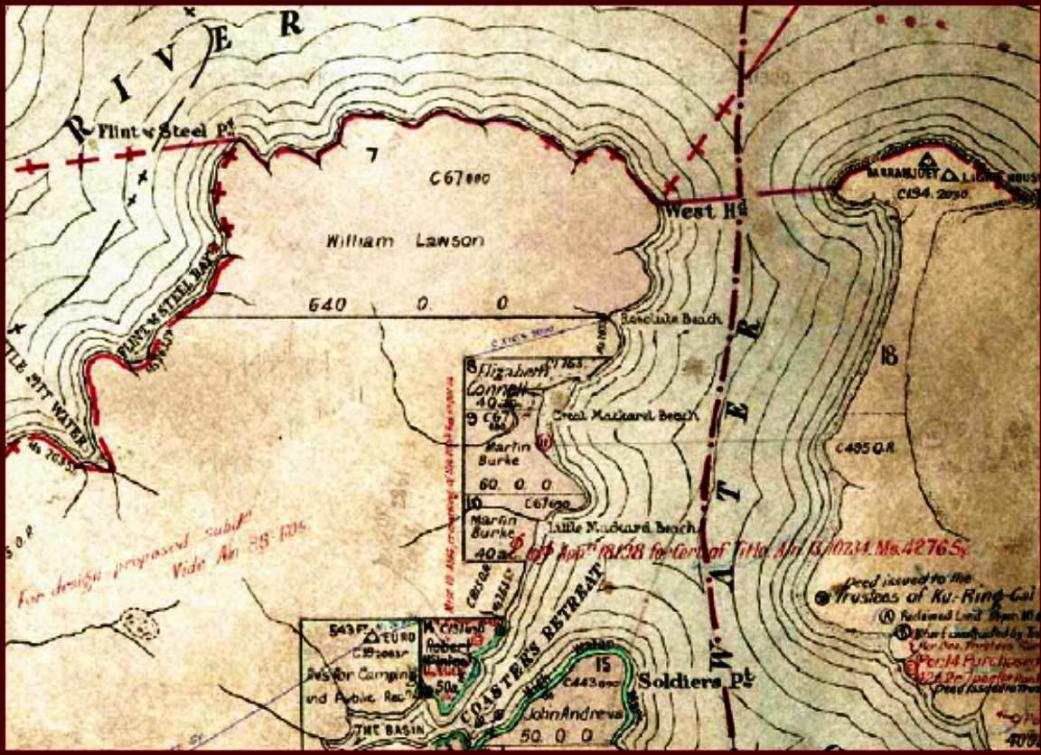
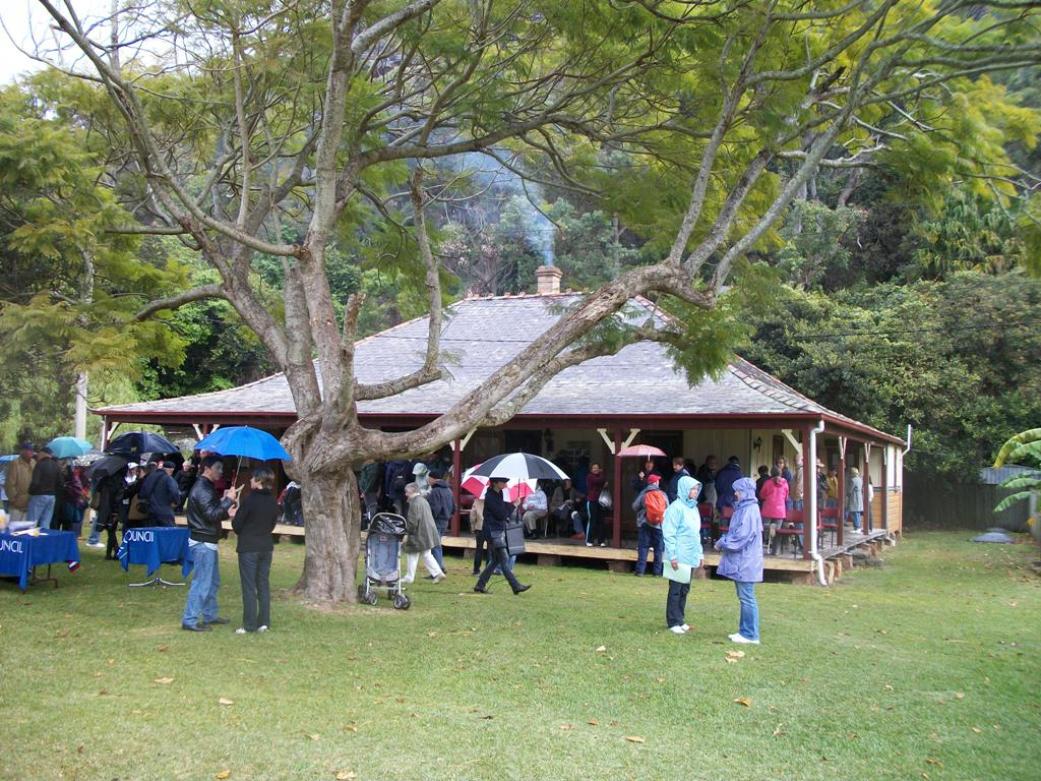

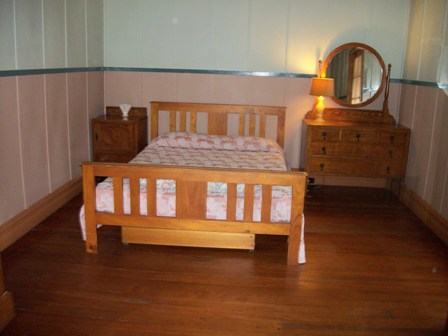
.jpg?timestamp=1639105260191)
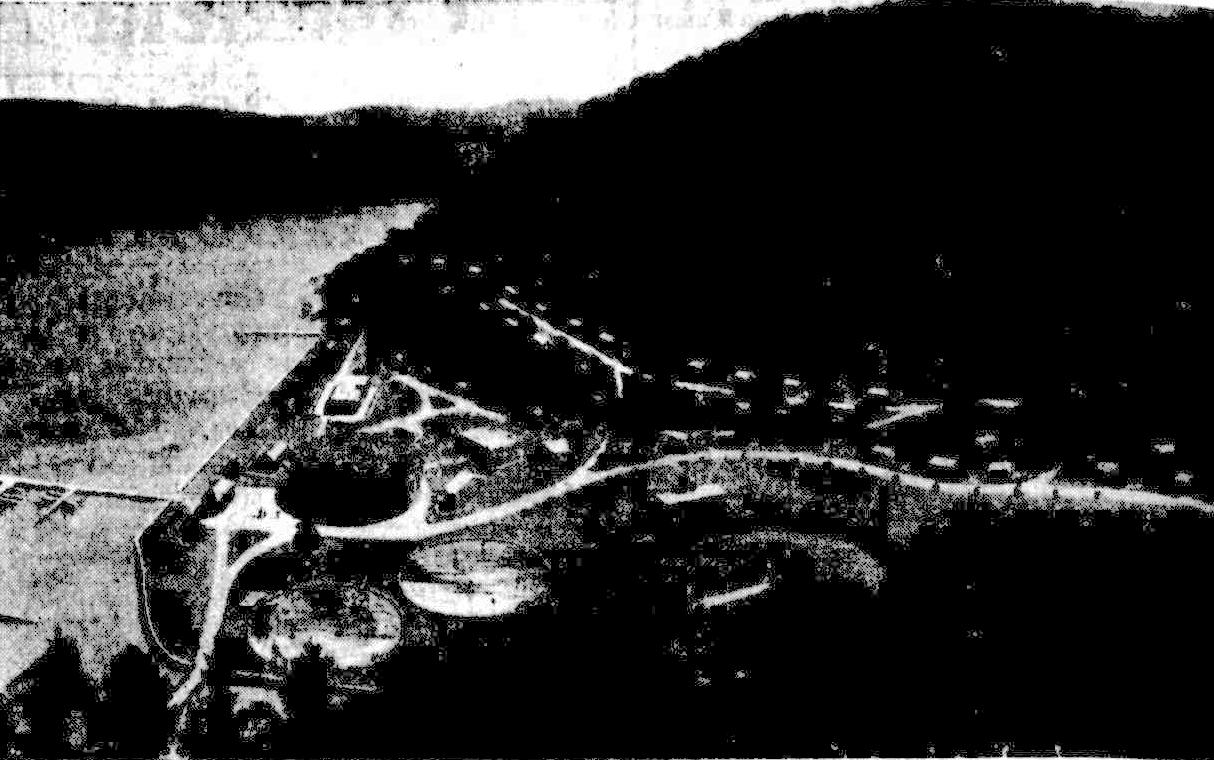

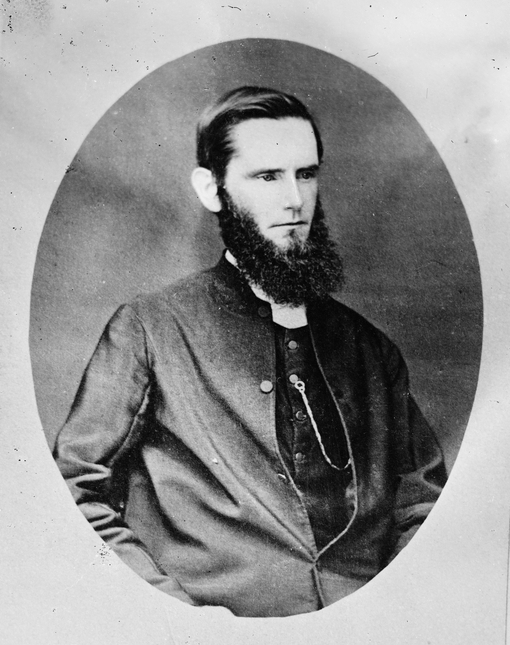
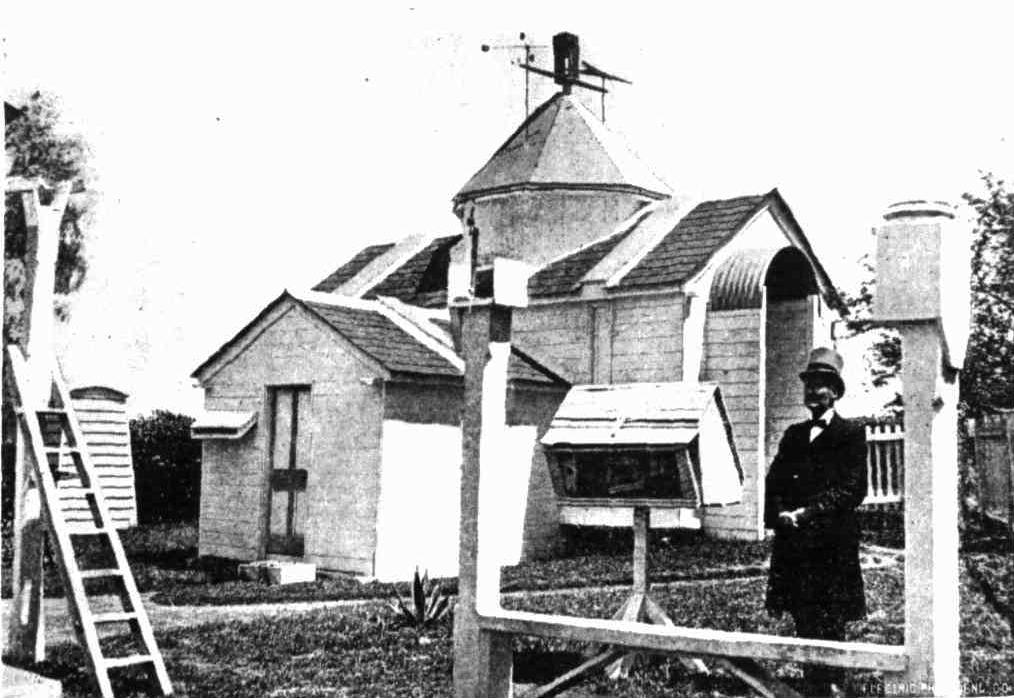
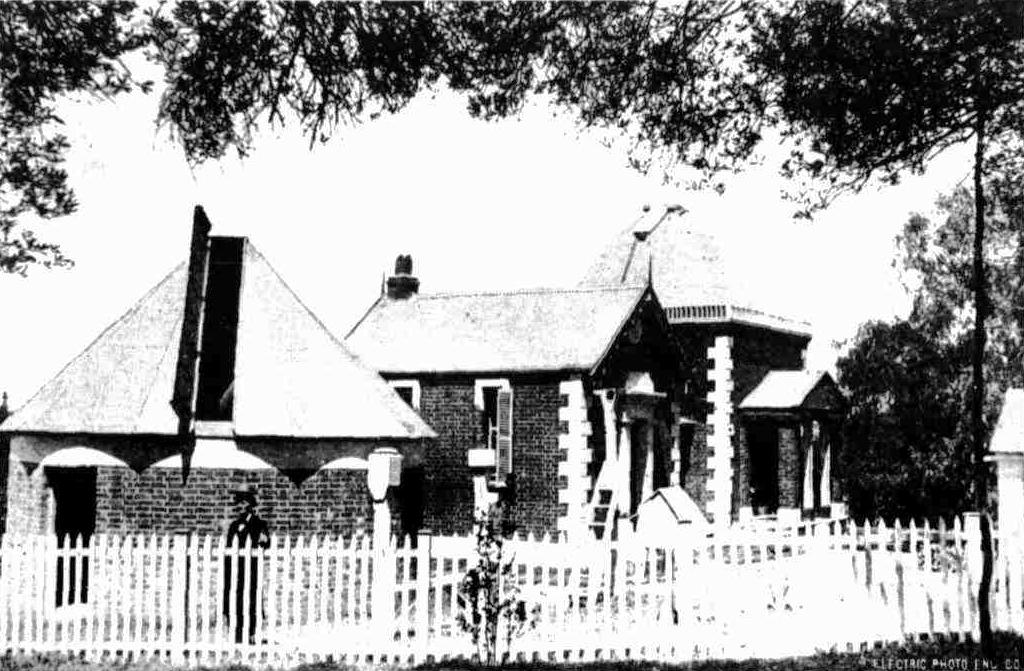
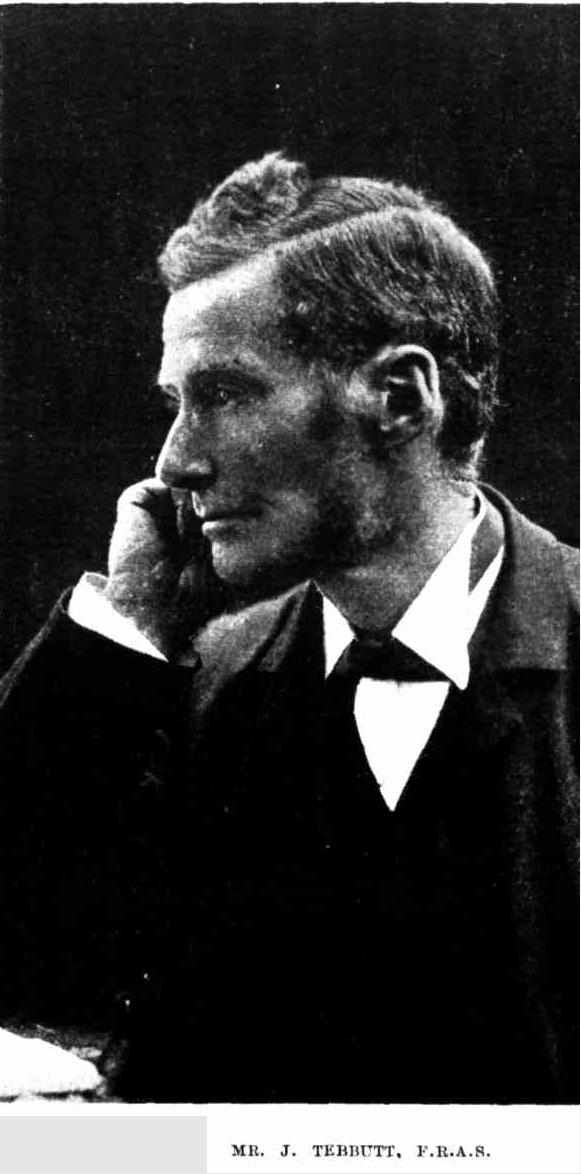
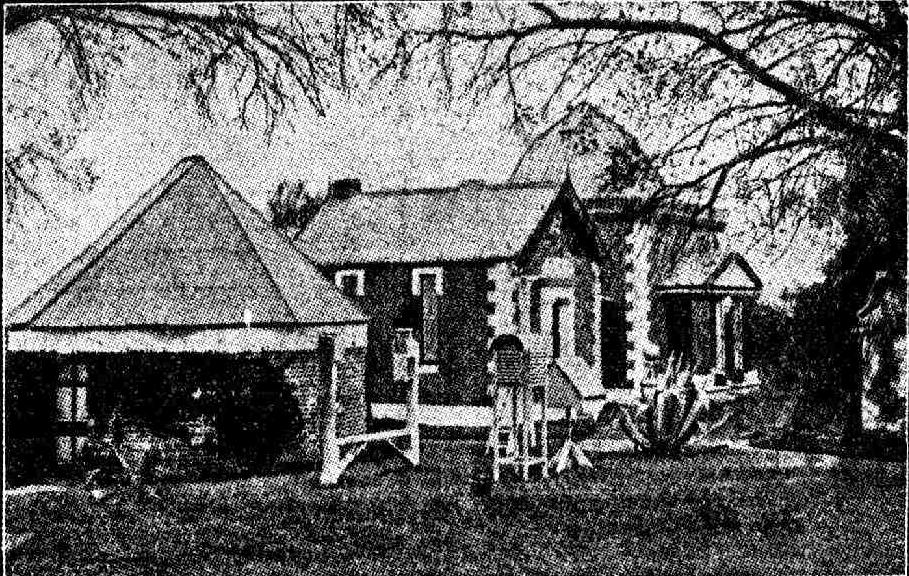



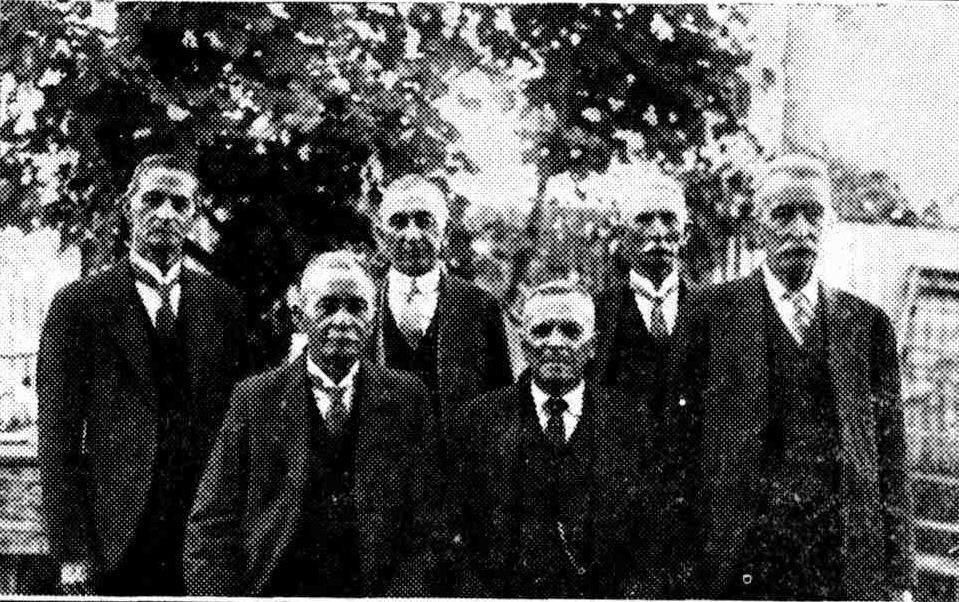
 DEATH OF REV. G. E. C. STILES.
DEATH OF REV. G. E. C. STILES.

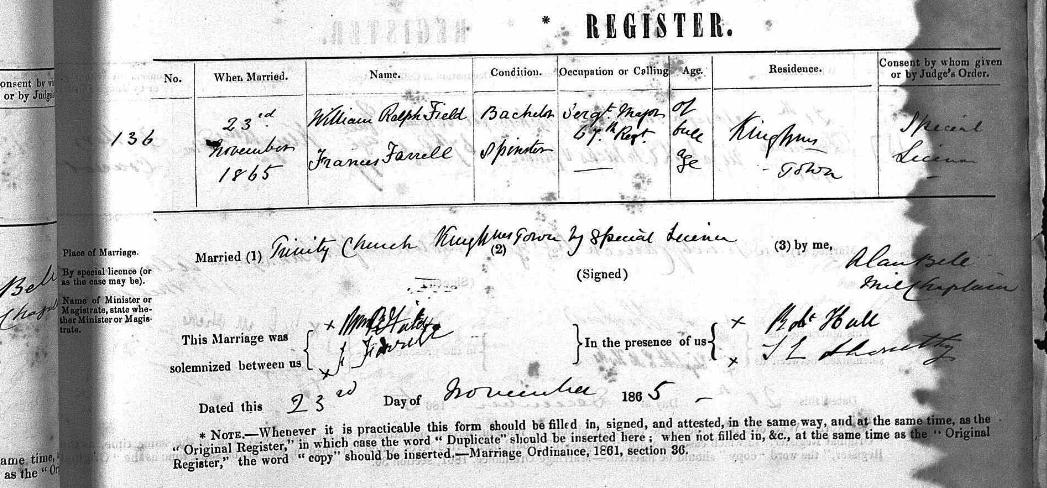
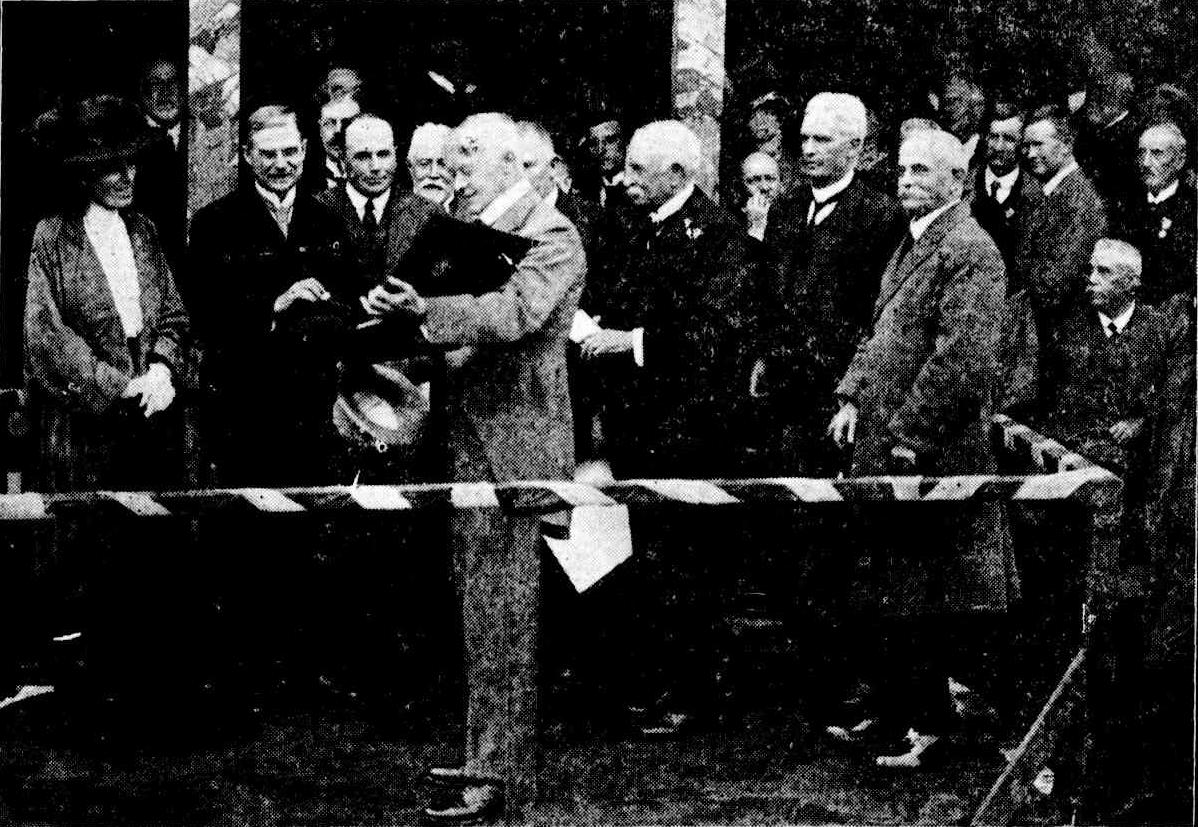
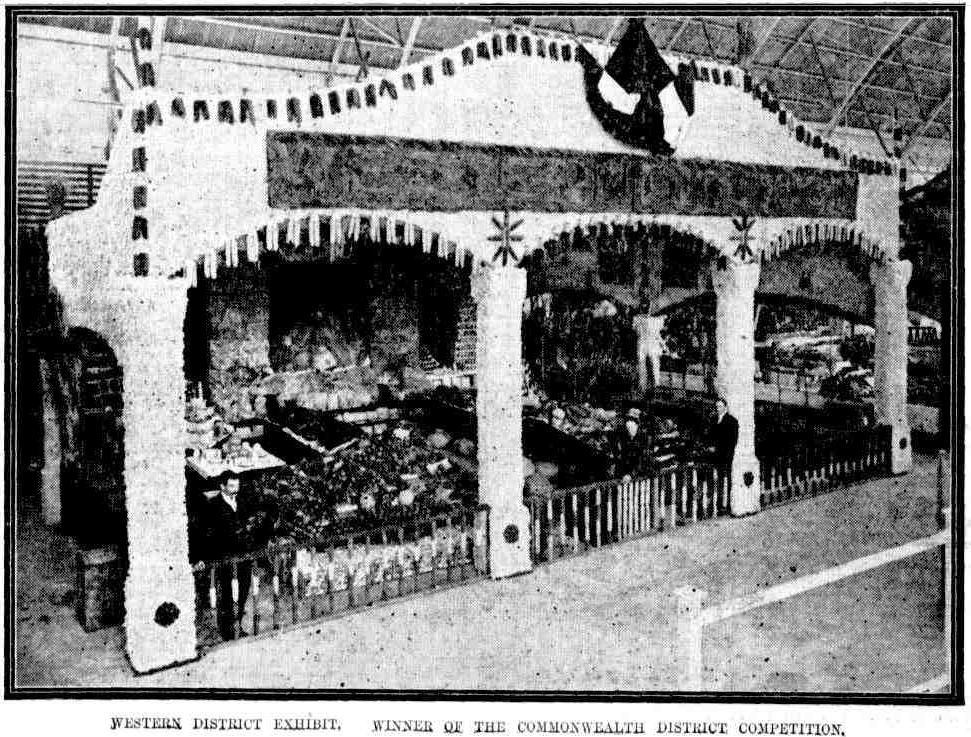
 The display of poultry this year is ahead of former years in the matter of
The display of poultry this year is ahead of former years in the matter of


 The Stiles family lived in the homestead for several years until it burnt down then built 'Africa', later renamed Midholme, a little to the northeast of the original farmhouse. The original Wilson house, replaced with ‘Africa’, named for Pink's old home, and later renamed ‘Midholme’ is a Federation style hobby farm from weatherboards and Fibro sheeting, a product used in many holiday homes during that period.
The Stiles family lived in the homestead for several years until it burnt down then built 'Africa', later renamed Midholme, a little to the northeast of the original farmhouse. The original Wilson house, replaced with ‘Africa’, named for Pink's old home, and later renamed ‘Midholme’ is a Federation style hobby farm from weatherboards and Fibro sheeting, a product used in many holiday homes during that period. 